|
20th March 2022 It's a Sunday and we're logged into Board Game Arena for an evening of fun. Hanabi is a cooperative game about lighting a series of larger and larger firework displays. The catch is that everyone must rely on other players to give them clues to do so. Get it wrong though and the show could end early. Who thought fireworks could be so stressful, well... other than pets! What's in a game?
All the artwork on the cards are understandably themed after fireworks in their respective colours. For the most part it looks clear but I've found that in dimmer light, the colours can look a little weak. Hanabi makes minimal use of iconography, the cards are cleared numbered while icons are also used to designate different colours. 2 symbols are used on tokens. How's it play? Setup
On to play The objective in Hanabi is to create a stack of face-up cards for each colour by playing them in numeric order, starting with the 1 and finishing with the 5. All of this must be done without any player looking at their own cards. Players should hold their cards up with the backs facing them so that all others can see what cards they have. Players then provide clues to each other and use these clues to deduct which cards to play. Hanabi uses a standard turn structure with the active player taking a turn before play progresses to the left. The active player must perform one of the following actions.
Endgame Play continues until 1 of the following 3 criteria are met. Win: If the 5th card of all 5 stacks are correctly played, the players immediately win the game. They have achieved a perfect score of 25. Lose: If the 3rd and final storm token is flipped over, the players immediately lose, scoring a big fat 0! Deck depletion: If play progresses until the last card is drawn from the deck, all players get one more turn. After this, the game is scored and the players collectively gain a score equal to the value of the top card on each stack, thus the maximum score of a incomplete game is 24. Overall
One of the things I like about Hanabi is that it's a small, fairly easy to learn cooperative game that provides a solid challenge, it has a reasonably quick playing time and would work well as a filler game. What's interesting in my opinion are the mechanics for clues and also clue tokens as they are inextricably linked. The game does a good job of balancing the usefulness of clues with their scarcity. When giving clues, players will want and need to give clues as efficiently as possible, it takes 2 clues to clearly define what a card (Both colour & number.) is and this uses a quarter of the available clues which is a lot! Frequently that means a clue might need to have a implicit meaning attached. E.g.; the clue, "You have one green," might implicitly mean 'Play that green card!' Players receiving clues will need to interpret and deduct meaning from the information they have now been given, combining it with the information they see in other players' hands before deciding what to do. Sometimes they won't have all the information they want, sometimes they'll need to gamble on a decision. Flipping clue tokens back to their unused side can be vital to doing well, usually this will involve discarding cards and it also allows players to draw cards and put new options into play. Blindly discarding cards can be tricky though, if a 5 is discarded, there goes the chance to get a perfect score. - Not that getting a perfect score is easy, it's not! Consequently, it's sometimes a good idea to give players clues about what to get rid off. not keep. It should also be noted that like many cooperative games, luck can play a big role in Hanabi. If those lower value cards don't until later in the game, players will end up discarding higher value cards to get to them. Hanabi does have some minor drawbacks though. Having to constantly hold up cards so others can see them feels a like a little bit of a pain. The same is true of drawing new cards and remembering not to look at them. When a player is given clues about their cards, it can be a chore to remember not only what the clues are but also the location of those cards in their hand. Otherwise that can lead to some pretty devastating plays! Interestingly, the digital version of Hanabi remembers the clues for players. I also found Hanabi to be slightly frustrating, although this may be due to the behaviour of other players. It's definitely stressful watching another player not get the hint when they've given a clue. These are minor quibbles and Hanabi is a unusual and challenging cooperative game that forces players to think hard and logically, provides meaningful decisions and some solid fun: Some big gameplay delivered in a small package. Hanabi is definitely worth trying.
0 Comments
15th March 2022 It's another Tuesday evening with the Woking Gaming Club at The Sovereigns and we're playing Regicide Is Regicide a cooperative game about recruiting heroes from a local tavern to go fight epic battles and raid a castle against a series of bosses (Who happen to be regents!), or is it just a deck of cards? Turns out it's both. What's in a game?
Well... there's not much that can be said here. It's a game that can be played a deck of ordinary cards and that's what it look like. The official Regicide deck is nicely illustrated with some stylised and quirky fantasy themed artwork but it's still recognisability a standard deck of card. And the game's iconography, well they're clubs, diamonds, hearts and spades. You get the idea. How's it play? Setup
On to play In Regicide, players must coordinate actions in order to prevail, however, they cannot communicate with each other. During their turn, the active player uses one or more cards in their hand to attack the current enemy before then using more cards to resist the enemy's counterattack. Play then continues to the next turn and the player on the left.
Endgame Play progress until 1 of 2 conditions are met. If the players defeat the 12th and final enemy, then they collectively win. If at any time a player cannot discard enough cards to cover an enemy's attack, then the players collectively and immediately lose. Overall
On a basic level players are faced with 4 choices when attacking and how to use the 4 suits and their respective abilities when playing Regicide is vital. The advantages of each ability are contextual and players will need to learn recognise when to use which suit. Suffice to say, players will need to make use of all the suits appropriately. Of course it's not as simple as I'm making it sound. As with all cooperative games, luck plays an important part here and players will frequently find themselves lacking the cards they want, the immunity rule can also well and truly throw a spanner in the works too. This forces them to make tricky decisions or find other approaches to how they attack and or indeed manage defence. It should also be said that Regicide is a very hard game, very hard! I heard someone state that players can expect to win about 1 in 6 times but I feel this is an underestimation of the game's difficulty. We've played it numerous times and never won, we barely ever made it to the kings! Not only is the game hard off the bat, it just gets harder and harder! I would argue that the Regicide is too hard, which would be my one gripe with it. Although it's entirely possible that there's some strategy that we overlooked. Regicide has a fairly quick playtime which is in part due to it's brutal difficulty curve and could be a good filler game, although bear in mind that it definitely tests the grey matter. It's a fascinating game that condenses a fair chunk of cooperative gameplay into a deck of 54 cards and gets a lot out of it. The rules are as impressive as the game is ruthlessly hard. Regicide is a game worth trying if only to experience how such a game plays, just so long as you don't mind losing. 15th March 2022 We're with the Woking Gaming Club at The Sovereigns for some Tuesday evening entertainment. Four Gardens is a game about you guessed it... four gardens, it's also about spinning a pagoda! I'm not sure if Spinning Pagodas would be a better name or not? Why are players spinning a pagoda? Apparently, the pagoda contains some gods! Who... I guess... like... being spun? What's in a game?
The resource tokens felt like they were wooden and the wooden cubes were pretty standard wooden cube components, which is something I like. The tiles were standard quality card tile and fine, I thought having tiles with little hole to hold resource tokens was a pretty smart move. The card were also pretty standard quality from what I could tell. From the large, eye-catching and rotating pagoda to the tactile resource tokens shaped and coloured identically to their icons in the game; Four Gardens has excellent presentation. The backs of the cards which, when placed together form the panoramic views of the titular feature excellent, colourful and interesting art. Four Gardens features a fair amount of iconography, from the 4 scoring tracks and types of gardens to symbols for resources and different actions available on cards. For the most part, it's instantly understandable and there should be few problems with the iconography. How's it play? Setup
On to play As the name suggests, the objective is to create 4 garden panoramas using the backs of the cards. Four Gardens uses the traditional turn, with the active player acting with play then progressing to the player on the left. During their turn, the active must perform exactly 3 actions. Each action also requires the player to play or discard one of the cards in their hand. There are 4 actions that can be performed, these can be performed in any order the player sees fit. The actions are:
Endgame Depending on the player count, once 8-10 panorama cards have been constructed by any player, play goes into the endgame and the current round is completed. Players calculated VPs earned from the 4 scoring tracks and points they may have gotten from a bonus VP track. Points are tallied, highest score wins. Overall
I'll start by discussing the pagoda - the game's most obvious feature. Is it a gimmick mechanic? Maybe. Does it work well? Definitely. It's also quite a unique mechanic and not something I've seen anywhere else. When used in conjunction with the rule limiting how many resources can be collected on the planning tile, it forces players to really think about how they have to manipulate the pagoda to get the resources they need: It takes an action to empty a planning tile that's been filled unnecessarily and that's an action that could be used elsewhere. I think it's a set of mechanics that works very well. Talking about the pagoda does lead me to one gripe: Which is the rule where all players should sit around the pagoda at 90' angles. Players don't always have the right gaming space to accommodate this and while strictly speaking, it's not necessary as players can remember what side of the pagoda is meant to be facing them, it's inconvenient and finicky. The card-synergy, or more accurately score-synergy is a pretty clever rule, providing players a reason to work towards completing panoramas. The 4 scoring tracks seem a little unnecessary but in practice they work fine. This brings me to the knock-back mechanic. It feels a little harsh that, if a player gets their scoring marker knocked off the board, it can't come back into scoring. On the other hand if a player has reached maximum on a track and other players are lingering at the bottom, it's probably not a priority for those other players, so not that much of a loss. So yes, it feels a bit harsh but it's not game breaking. All of this means players will look to optimise the order in which they play cards to optimise how they increase their scores. Concentrating on increasing scores in 1 or 2 tracks can potentially knock-back other players. Conversely, working towards completing panoramas can earn bonuses which may prove useful elsewhere; sometimes you'll be able to do both but sometimes not and looking for opportunities to exploit these times is vital. The also makes use of a variation of the hand-as-currency mechanic, except here it's used to trigger actions and not to actually pay for something. Despite this difference, it places that same conundrum on players; which is how to choose which card to discard? Obviously, they'll be times when it has to be a card with the action they need but otherwise, it's another meaningful decision to make. In conclusion; Four Gardens is a fairly easy to learn set-collecting game that provides players with enough decisions to be engaging, fun and provides unusual resource gathering and scoring mechanics which makes it feel unique. I enjoyed it and think it's worth a try. 13th March 2022 It's a Sunday evening and we're logged into Board Game Arena for some gaming fun. As the title implies, Stella - Dixit Universe is a offshoot of the game Dixit and while it is different, it does share some elements with its predecessor, mostly notably having artwork on cards which share the same almost abstract, dreamlike quality. In fact in the physical version, both games share the same backings for these cards, meaning they're interchangeable between the two. Caveat: We've only played Stella - Dixit Universe digitally. What's in a game?
There's minimal art elsewhere. The game's iconography is also minimal to the point of being almost non-existent. How's it play? Setup
On to play Similar to its predecessor, Stella Dixit Universe is word association game, but here, the word is chosen by the game. 4 rounds are played during the game and each round has 3 phases. The first 2 phases are essentially performed simultaneously, with the 3rd phases occurring in turn order.
Endgame Once the 4th round has been completed, players should total their scores from across all 4 rounds. Points are tallied, highest score wins. Overall
Like it's earlier iterations, Stella - Dixit Universe can be a divisive game, its core mechanic is acutely subjective in nature and it can be a real love/hate thing! Certain types of gamers; those who enjoy the heavier, analytically and mathematically driven games may well be frustrated with a game about trying to guess what other players might think of a particular word. Social skills are important here, it's more about playing the player than playing the game, understanding how they think and what they'll pick. As with its predecessor, Stella - Dixit Universe uses a mechanism to score more VPs when making a slightly more obscure choice which can trigger a super-spark. I feel the game has the same quirk with the rule as well; players who know each other well will be at a advantage here. Other than trying to predict what other players will do, there's also a balance between how many associations to make with a word. Too few and players risk scoring less, while too many could end up costing points, generally it's prudent to err slightly on the cautious side and avoid being the player In The Dark. It obvious why the rule exists, it's to stop players haphazardly selecting too many words but it's still a little frustrating and also a bit of a finicky rule. That brings me to the one real bugbear I have with the game and that's the rule with Falling. If a player Falls, they immediately stop scoring, so if a player falls at their 1st reveal, they score nothing for that round - and worse, other players can still score off them! Conversely, if they fall with their last choice, the damage is minimised. I know that choices on the order to reveal cards are part of the game and cards which are seen as less risky should be selected fist and the rule offers a genuinely meaningful decision but even so, I found it immensely irritating. Although perhaps I'm not the best judge, I can be ambivalent with this type of game, it generally doesn't suit my style of play and and maybe I'm a bit too harsh. When I remember to adopt a particular mindset to playing it, there's definitely fun to be had. Stella - Dixit Universe plays with 6 and veers into party game territory, it's a light crossover game that's pretty easy to pick up and play and will allow non-gamers to get stuck in and enjoy themselves Treat it as a fun diversion more than a serious game and Stella - Dixit Universe is an enjoyable experience. 4th March 2022 It's a Friday and I'm in Farnborough with some workmates for some evening games. The first game of the night is essentially 3 Wise Monkeys: The Game, known as Team3, although I'm not certain any of us are particularly wise? What's in a game?
The blocks are made of sturdy colourfulplastic and feel very tactile, handling and playing them feels quite satisfying. Otherwise, the cards are pretty standard quality. The game's art is monochrome and only appears on the role cards. The 3 illustrations are slightly cartoony looking but also fairly good. Other than the images on the blueprint cards, there's no other iconography in the game. How's it play? Team3 can be played cooperatively as a team if 3 or competitively as 2 teams of 3. The 2 play styles are practically identical, the only real difference being how the blocks are allocated. For the purposes of this blog, I'm going to describe the competitive game and point out how the cooperative game is different. Setup
On to play Both teams play simultaneously and have the objective of putting together their blocks in the shape/configuration shown on the card which was drawn. However, there are some complications to this...
Endgame The team that reaches 6 points first, wins. Although this limit is fairly arbitrary and players can choose whatever score limit they want. Cooperative In the cooperative game, the team gets 3 minutes to complete a blueprint, if they take longer, they fail. 3 minutes might seem a lot, but the 2 and 3 star difficulties get much more complex. Overall
There's little strategy that can be adopted when playing Team3, that's not a criticism though, Team3 is sort of a hyped version of charades that's all about communication and interpretation between teammates. As with actual charades, players will probably very quickly adopt some standard gestures to represent certain things. It's also worth adding that the game comes in 2 versions Green and Pink, which can be combined to support up to 4 teams of 3 players. There's not much more to say about the Team3 really. It's a light party game that is easy to learn and will have a lot of crossover appeal, it's not something to be taken seriously. If you looking for deep gameplay, look elsewhere. With the right people though, Team3 can be a fun diversion or a good filler game. Welcome to the inaugural blog post of 'The month in gaming', a digest style post about all the games I've played in February 2022 which replace all the 'non-first play' blog posts. First play will still get a write up as usual. In February 2022, I played: Total games: 53 Different games: 33 First plays: 8 Tuesday 1st at The Sovereigns with the Woking Gaming Club
Space Base - 5 Race for the Galaxy - 11 Wednesday 2nd on Board Game Arena Century: Golem Edition - (3) Via Magica - 8 Sushi Go! - 10 Martian Dice - 11 Railroad Ink - 16 Thursday 3rd, round Simon's My Little Scythe - First Play! Nidavellir - First Play! Sunday 6th February at The Sovereigns Death on the cards - 6 Race for the Galaxy - 12 Deep Sea Adventure - 3 Sunday 6th on Board Game Arena Cloud City - 8 Space Base - 6 Lucky Numbers - 12 Can't Stop - 9 Railroad Ink - 17 Love Letter - 54 Tuesday 8th at The Sovereigns with the Woking Gaming Club Llamaland - First Play! Fantastic Factories - First Play! Wednesday 9th on Board Game Arena Century: Spice Road - 4 Splendor - 16 Space Base - 7 Can't Stop Express - 3 Lucky Numbers - 13 Railroad Ink - 18 Wednesday 9th, round Simon's. In the Hall of the Mountain King - First Play! Sunday 13th on Board Game Arena Carcassonne - 5 Shifting Stone - First Play! Codex Naturalis - 18 Lucky Numbers - 14 Martian Dice - 12 Can't Stop - 8 Tuesday 15th at The Sovereigns with the Woking Gaming Club Race for the Galaxy - 13 Port Royal: Big Box - 18 Thursday 14th, round Simon's Star Wars: Outer Rim - First Play! Friday 18th on Board Game Arena Parks - 06 Railroad Ink - 19 Shifting Stones - 2 Sushi Go! - 11 Lucky Numbers - 15 Sunday 20th on Board Game Arena Loco Momo - First Play! Dragonwood - 9 For Sale - 7 Potion Explosion - 11 Dice Forge - 10 Lucky Numbers - 16 Love Letter - 55 Tuesday 22nd at The Sovereigns with the Woking Gaming Club Fluxx - 3 Quacks of Quedlinburg - 3 Sunday 27th on Board Game Arena Loco Momo - 2 Space Base - 8 Cloud City - 9 Can't Stop - 9 Lucky Numbers - 17 20th February 2022 It's a Sunday and we're logged into Board Game Arena for some gaming fun. I don't know what Loco Momo means but I kind of hope it means crazy fun with cute animals. Hmm, that didn't sound right, how about wholesome crazy fun with animals. Loco Momo is actually about (I kid you not!) organising the disarrayed wildlife population of the forest for a group photo! Caveat: We've only ever played Loco Momo digitally. What's in a game?
It's good quality artwork though, a bright palette and bold cartoony style suit the game's light-hearted theme well. The game's only iconography appears on the player boards. It's not immediately apparent what they mean but quick read of the rules makes them clear. How's it play? Setup
On to play The objective of Loco Momo is for players to fill their boards with tiles to score VPs and the game provides various approaches to achieve this. Although this mostly involves collecting various kinds of sets. Loco Momo uses the traditional structure with the active player taking their 2 actions - a drafting action and placing action with play then moving to the player on the left.
Endgame Play continues until the 6th round is completed, then scoring occurs.
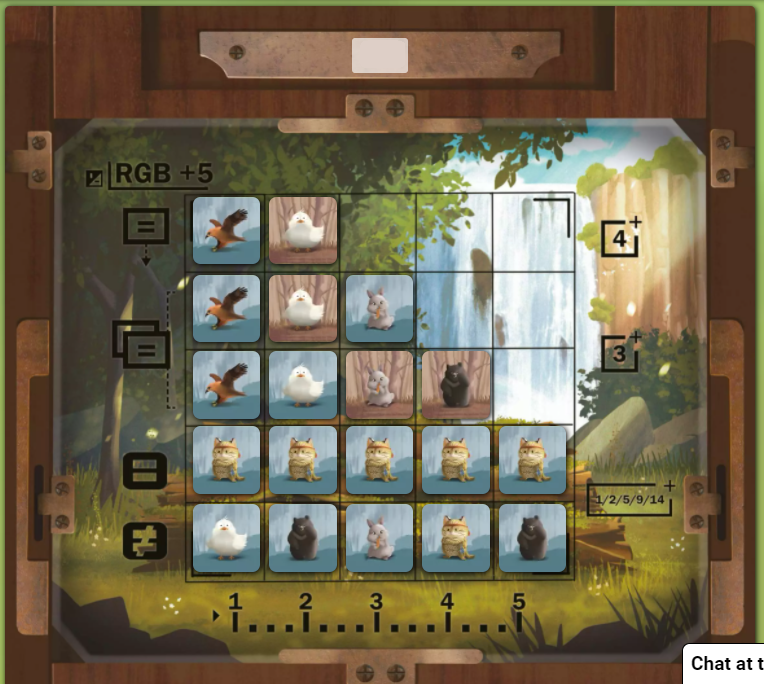 The bottom row has 5 different animals, scoring 14. Row 2 above has 5 identical animals, also scoring 14. The matching eagles in the 1st column for rows 3 & 4 score 3, plus the eagle in the top row above scores an additional 4. The ducks in column 2 also score 7. The 2 rabbits in column 3, rows 3 & 4 score 3. The bear scores nothing. Finally, 2 rows have the same colour as does 1 column, scoring 15 more. Total score: 60. Overall
Loco Momo is a fairly straightforward game, the gameplay strategies are more or less obvious and there's not much to say about it. During drafting players will look for the optimal method to acquire the most tiles possible or, as will occur on occasion if there's little they want, try to avoid taking tiles. Then, when placing tiles, players may need to make some meaningful choices. Sure, it's easy putting down tiles when a player has got the ones they wanted but frequently, this won't be the case and dealing with those wayward tiles is very important. Players will want to keep scoring opportunities for other tiles/sets open and minimise the damage caused by having to place unwanted tiles. There's also a higher level of play that involves looking at what's available on the central board and what other players are working towards, then trying to anticipate what tiles they'll be looking to gain from themselves. It might be prudent to try and deny other players certain tiles. Or if they're not interested in tile of a particular colour, it might be safe take that tile in a later turn. This brings me to the one niggle I have about Loco Momo, which are the colour scoring rules. We've only played Loco Momo 3 player and because there are 3 colours of tile, we tend to gravitate towards one colour each with little 'stealing' of other players' colours. Which is understandable as completing columns/rows with the same colours confers nice bonuses and during the late-game completing sets scoring the colour instead of the animal gets more VPs. Consequently it also makes decisions 'easier'. I imagine with 4 players, this status quo would be shaken up and the game would become more interesting. Despite the criticism, the game ultimately generally does provide players with meaningful decisions to make. Games about about drafting sets of tiles and placing them on to a player board are pretty commonplace today. So does Loco Momo do anything to stand out from the crowd? I think the answer is... sort of. Loco Momo is a bit unremarkable but at the same time it's an enjoyably light, easily learnt and accessible example of this kind of game with a reasonable playing time. A good introduction or crossover game If this ticks your boxes, Loco Momo might be worth a look. 17th February 2022 It's a Thursday night and we're round Simon's for some gaming goodness. The game of the night was Star Wars: Outer Rim. Turns out that playing a scoundrel in an open world Star Wars game ain't like dusting crops. What's in a game?
Regardless of whether it's practical or not, the semi-circular board looks like eye-catching. From an art perspective, it's clear that they've used some photo-referencing from the films for some of the illustrations and I think that's fine, it still looks like good artwork and means the game wisely eschews using actual photos anywhere. The quality of the art is good. Star Wars: Outer Rim uses quite a lot of iconography, for stats, for factions, on the dice etc. Fortunately, much of it is pretty clear and self-explanatory, it requires little referencing to the rulebook. This is helped by the use of tags which is easily understood. How's it play? Setup
On to play In Star Wars: Outer Rim players take on the role of outlaws, bounty hunters and scoundrels, the general scum and villainy of the galaxy I guess and the objective in Star Wars: Outer Rim is to acquire fame. There are varied paths to achieve this. collecting on bounties, delivering goods and other tasks or jobs that will occur during the game. In their turn, the active player will perform actions in 3 phases before play moves on clockwise. These phases are Planning, Actions and Encounter.
Endgame Play continues until the any player reaches 10 fame, the game then immediately ends and they are considered the winner. Overall
I haven't covered the entirety of the rules here but even so, from the perspective of complexity, Star Wars: Outer Rim isn't too bad or that complicated. You move a few spaces, perform actions, have an encounter and that's it. There are a number of situational exceptions (Mostly coming from cards that are drawn.) that need remembering though, players will want to pay close attention to their playing area to know what they'll be good at, paying attention to their tags in particular. The game also possesses some RPG aspiration here and makes use of very light RPG system, there's no XP as such but characters and ships can be levelled up after completing their goals. Having said that, the rules will probably be a little too convulsed for non-gamer types. I don't think that this is a game for Star Wars fans wanting a board game to play. It feels more like a board gamers who want a Star Wars game to play, which is not a thing necessarily bad and honestly, there's going to be a bit of crossover between the 2 groups. Because of the fairly open nature of the game, it's quite hard to describe what players will expect and strategies they might employ. Players will likely acquire jobs, encounters, bounties etc randomly to some extent, this will require them to adapt their strategies. Optimisation, picking up and completing jobs while working towards other jobs is vital here, as this finding the most efficient route across the map, The board's unusual shape essentially funnels travel along 2 or 3 routes. All of this is provided of course, that all the pieces fall in the right place. This would include watching how patrols move and the reputation players have with their respective factions. There are also other paths to accruing fame points such as fighting patrols. Players will also look to gain crew, improved ship and mods. Additionally, there's nothing to stop players fighting other players, in fact, the game may sort of encourage this as circumstances ay put one player's bounty aboard another player's ship. I'm not sure how I feel about Star Wars: Outer Rim. One aspect that irks me is the entirely different set of mechanics used for skill tests and combat. Another is the shape of the board. For an open world game players are in essence limited to the choice of going one way or the other, clockwise or anticlockwise. Yes. the board looks good and perhaps it makes sense within the context of the Star Wars setting but ,t feels like it's been done to nudge players to undertake tasks in a certain order, all in the name of game balancing or game play. I also found the game a little unengaging. I think this was down to a mixture of what felt like a long downtime between turns and frequently slightly unexciting turns. And as with a lot of open world games that sort try to implement a go-anywhere-do-anything theme. It feels like a bit more of an effort than it's worth. I wonder if it wouldn't be better to get a player to gamemaster an actual table top RPG instead. 15th February 2022 It's a Tuesday evening and we're at The Sovereigns with the Woking Gaming Club for some tabletop entertainment and Simon has gifted me a copy of Port Royal: Big Box. Strictly speaking, this isn't a first play, In fact, it would be the opposite! Port Royal is a firm favourite with pretty much everyone I game with and has seen a lot of play. You can read about Port Royal here. So what is in Port Royal: Big Box? You've probably surmised that the big box amalgamates the excellent base game along with it's 2 expansions, promo card and standalone game Port Royal: make Sail! What are these expansions like? I've never bothered playing them, I'm perfectly happy with the base game! As you will have noticed, Port Royal: Big Box also features all-new artwork, there's some side-by-side comparisons below. 13th February 2022 It's Sunday night and we're logged into Board Game Arena for an evening of gaming. Shifting Stones is a light sort of puzzle-themed sliding tile game. Caveat: We've only ever played this game digitally. What's in a game?
There's not much to say about the components. The illustrations on the tiles are nicely detailed and distinctive. However, I found the colours somewhat muted in lower lighting and a little indistinguishable, particularly the orange/red combination. The same is true of the cards. The game has no iconography other than the tile illustrations. How's it play? Setup
On to play Shifting Stones uses a traditional turn order, the active player has their turn and when it finishes, play progress clockwise to the next. During their turn, the active player perform any number of the score/swap/flips actions in any order so long as they have the cards to perform them. Alternatively, they may skip their turn.
Endgame Play continues until any player has scored (Dependant on player count.) 7-10 cards, after which the current round is completed. Players add up the VPs of all the cards they've scored during the game. Additionally, whoever played the most 1 value cards earns a bonus 3 VPs. Points are tallied, highest score wins. Overall
As you can see from the brief write-up, Shifting Stones is a fairly straightforward and accessible game, it could make a good introduction to new players or crossover game. Despite the straightforward rules, there is actually a bit of depth to be found in Shifting Stones. The game makes use of a hand-as-currency mechanic to pay for actions and getting rid of cards that might prove useful is always a meaningful decision. Players will want to minimise this and find the most efficient way to swap/flip tiles to where they need them to be and hope to score at least 1 card per turn. At the same time, hanging on to cards too long can earn nothing and trying to plan ahead is likely to be futile, it's too risky leaving things for another round as it players will invariably change the tile positionings, players will need to be decisive and exploit the opportunities that present themselves during their turn. There's not much more else to say really, there's no noteworthy interaction between players and it's hard to gauge what others are doing, especially since whenever they refill their hand - which is every turn, they'll be presented with newer options. Other than I found the game a little bit of a frustrating experience. Watching other players inadvertently wrecking the positioning I was try to set up between turns wasn't what I'd call much fun. I also found having to remember what was on the flip side of the tiles something of a chore, having to refer to the reference card wasn't much better. If perhaps. there was more engaging core gameplay, maybe I'd would make the effort to remember what's on the other side of the tiles. But there wasn't, so I didn't. Shifting Stones is straightforward and clearly skews towards the lighter end of the complexity scale, it would possibly make a good filler game. I'm not sure there's enough here to appeal to me though and coupled with the frustrating experience means that this is not one for me. |
AuthorI play, I paint. Archives
March 2024
Categories
All
|

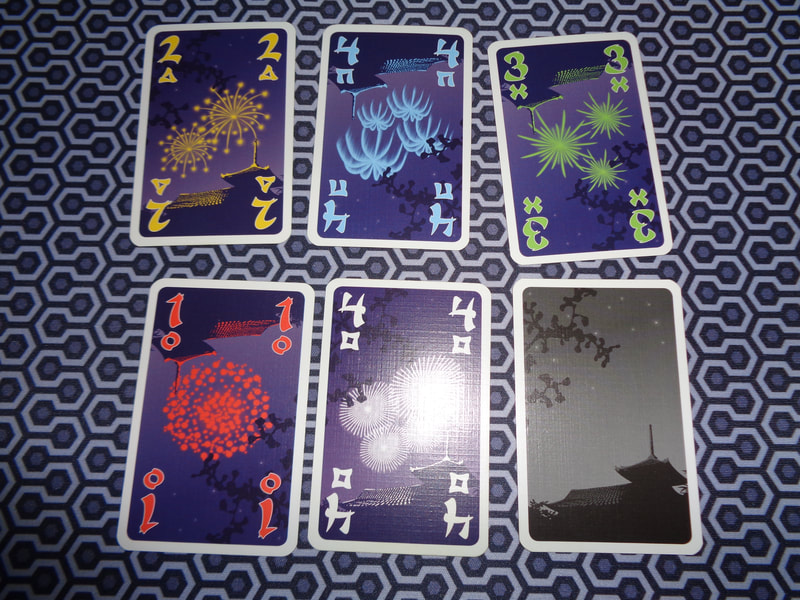

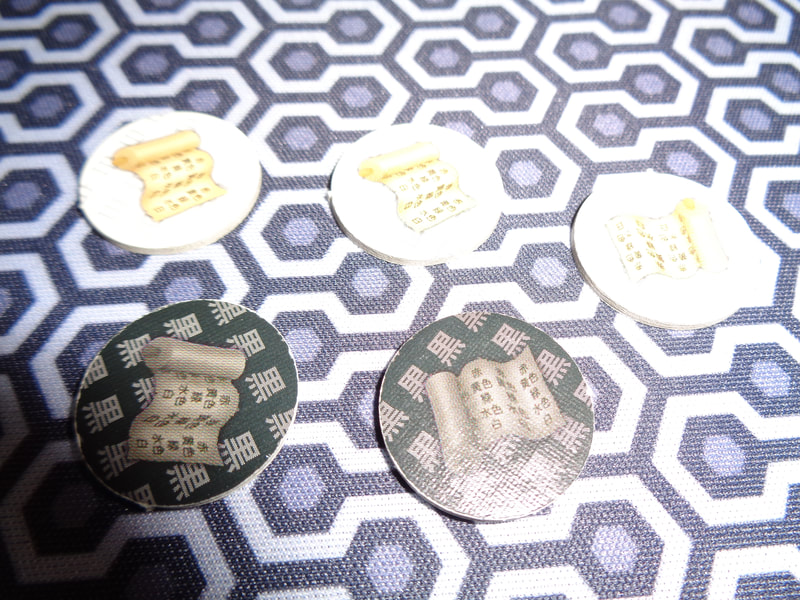

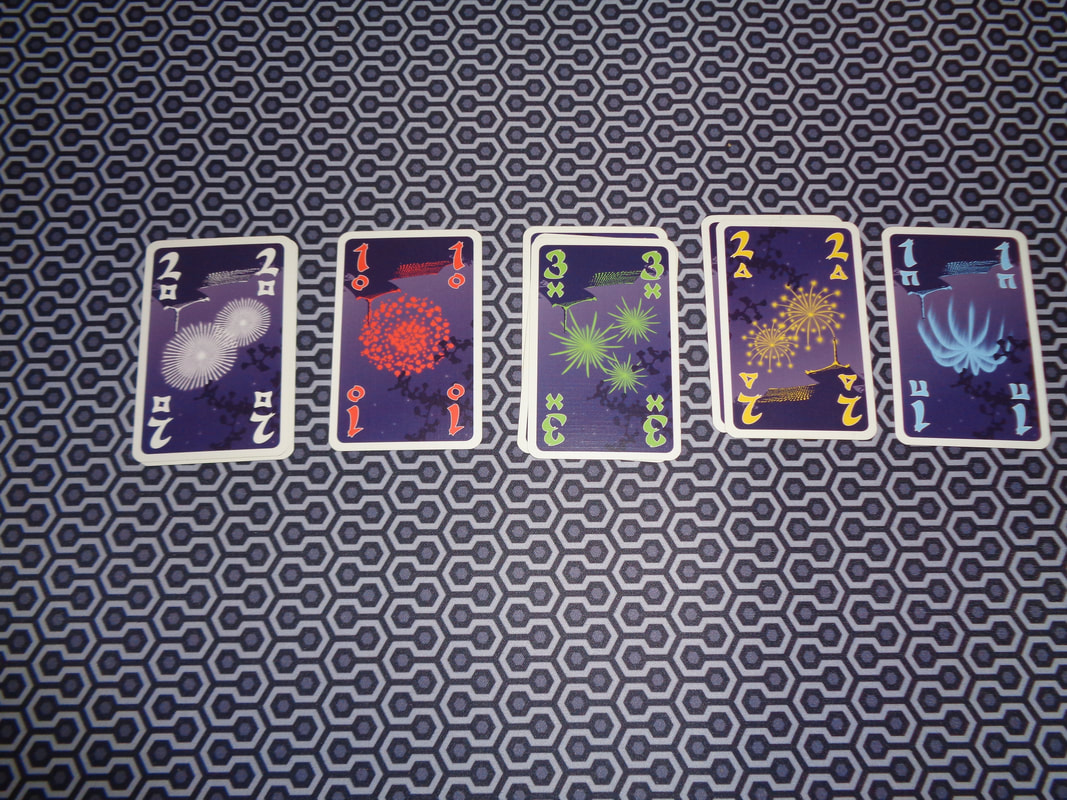
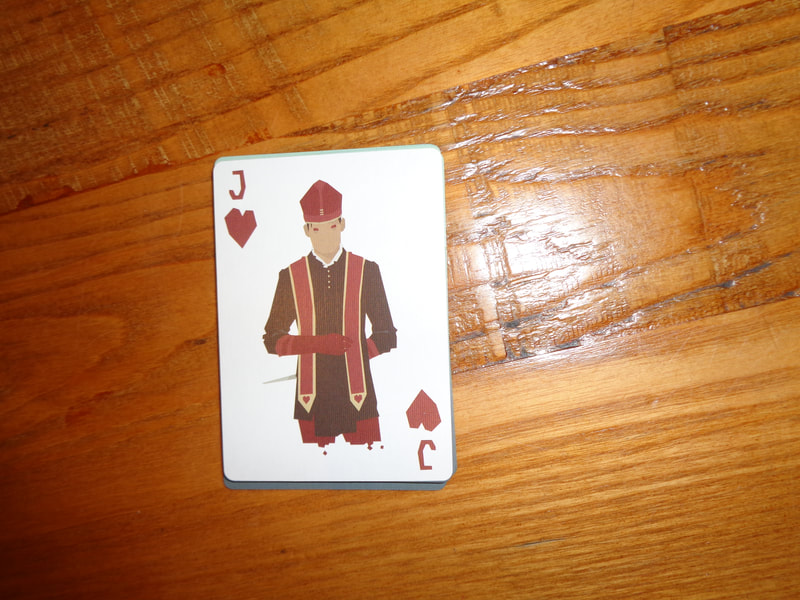
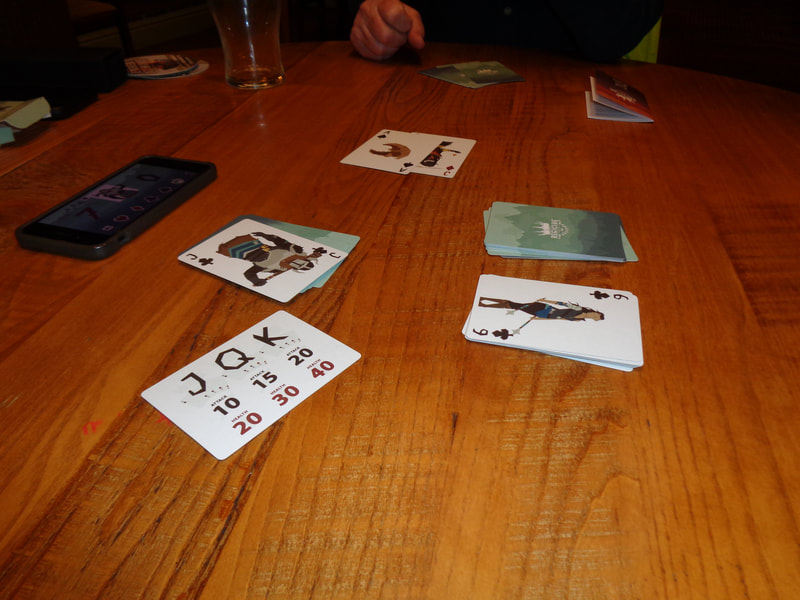
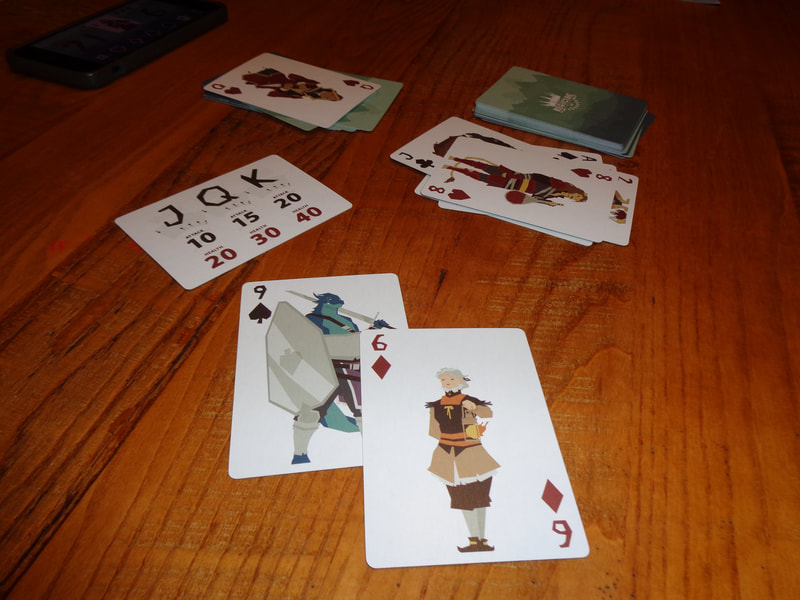
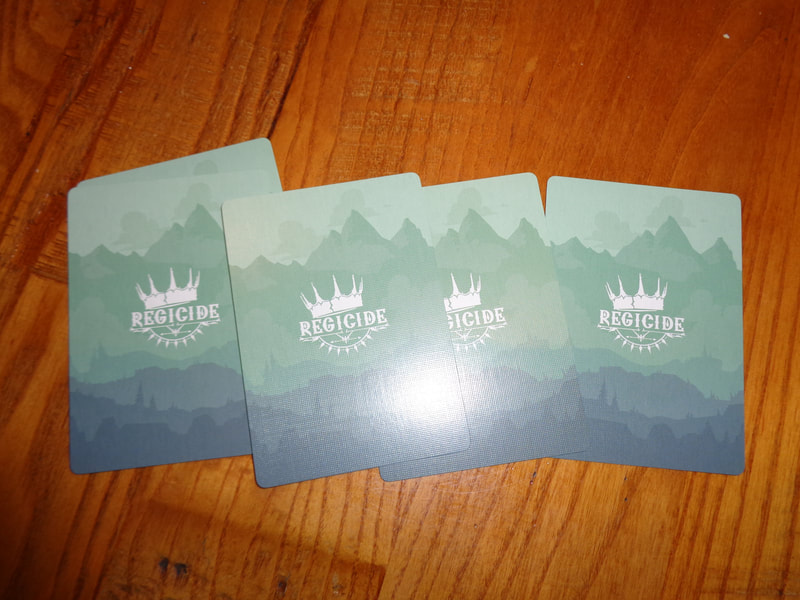
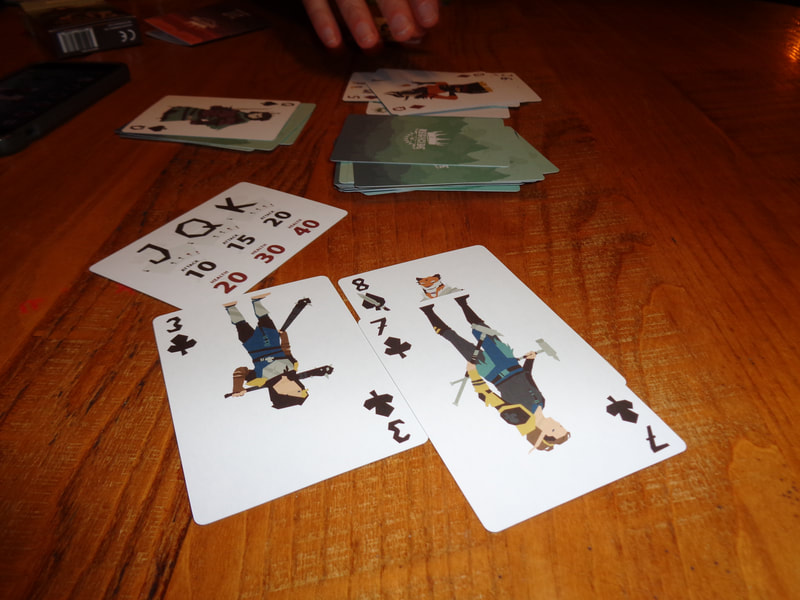
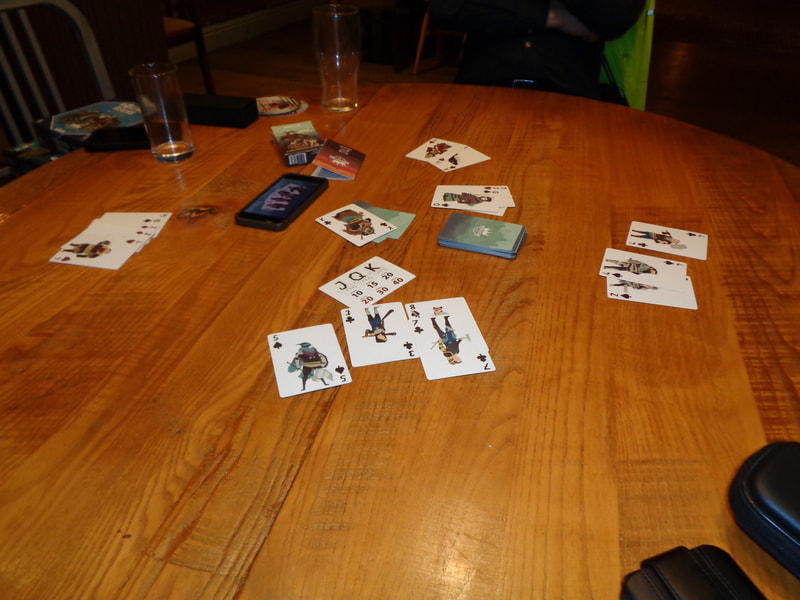
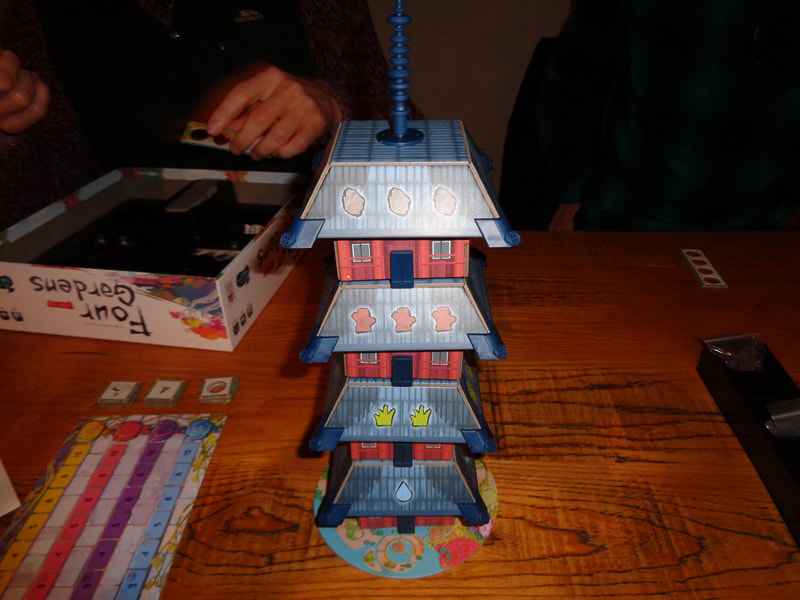
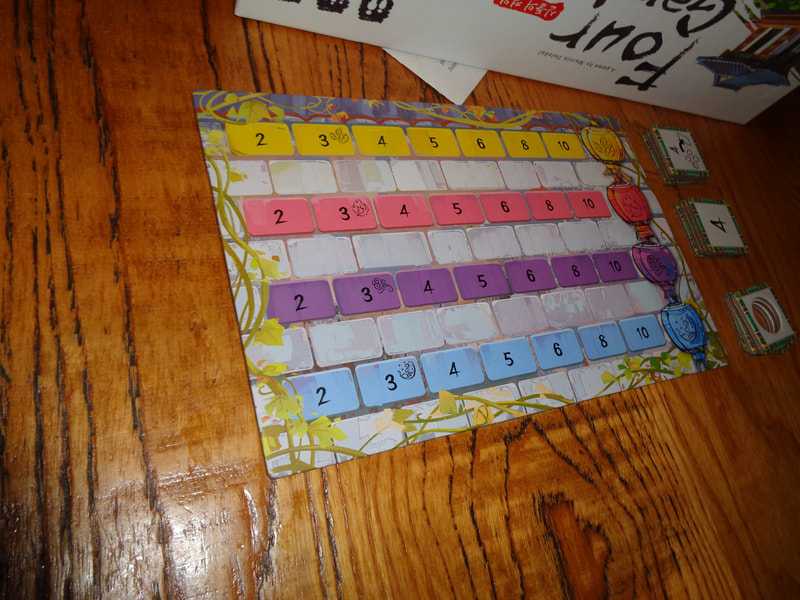
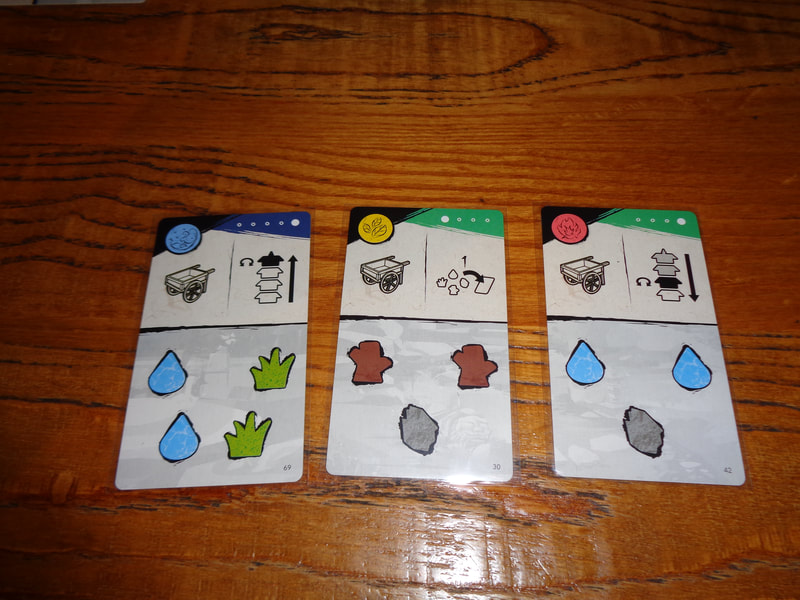

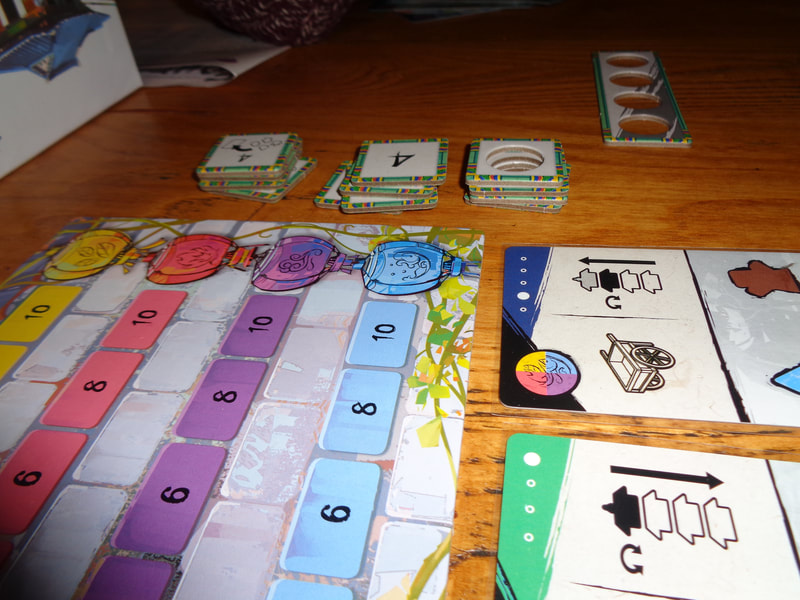
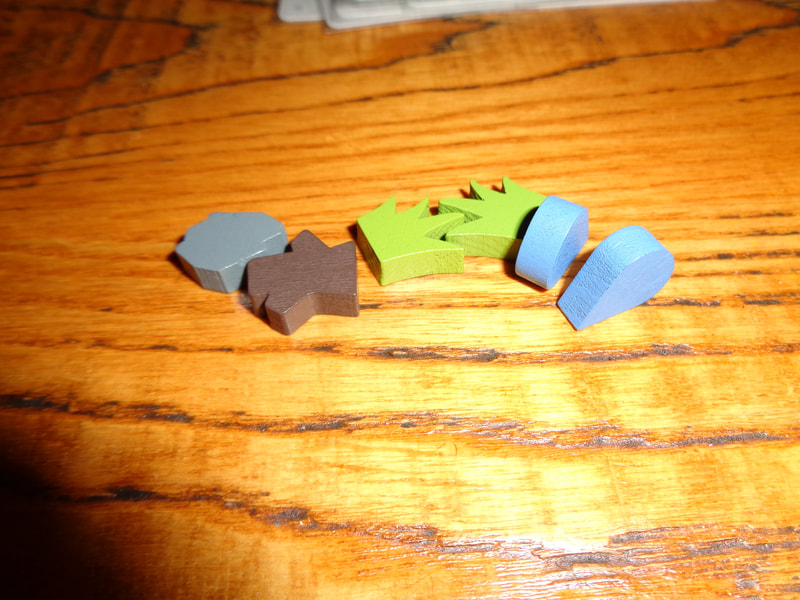
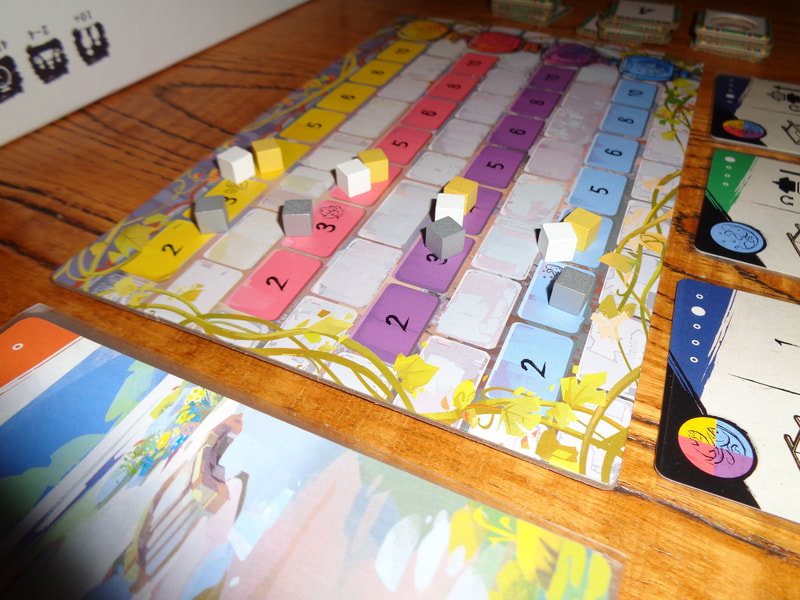


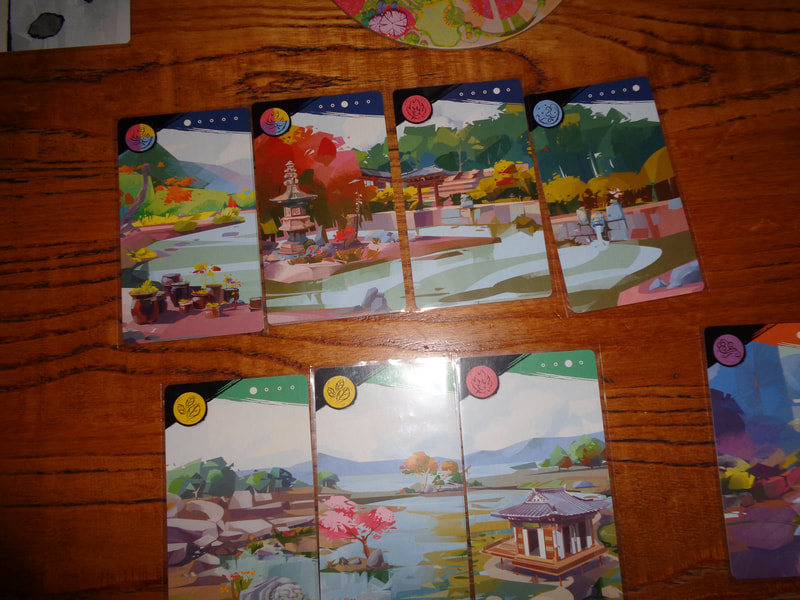
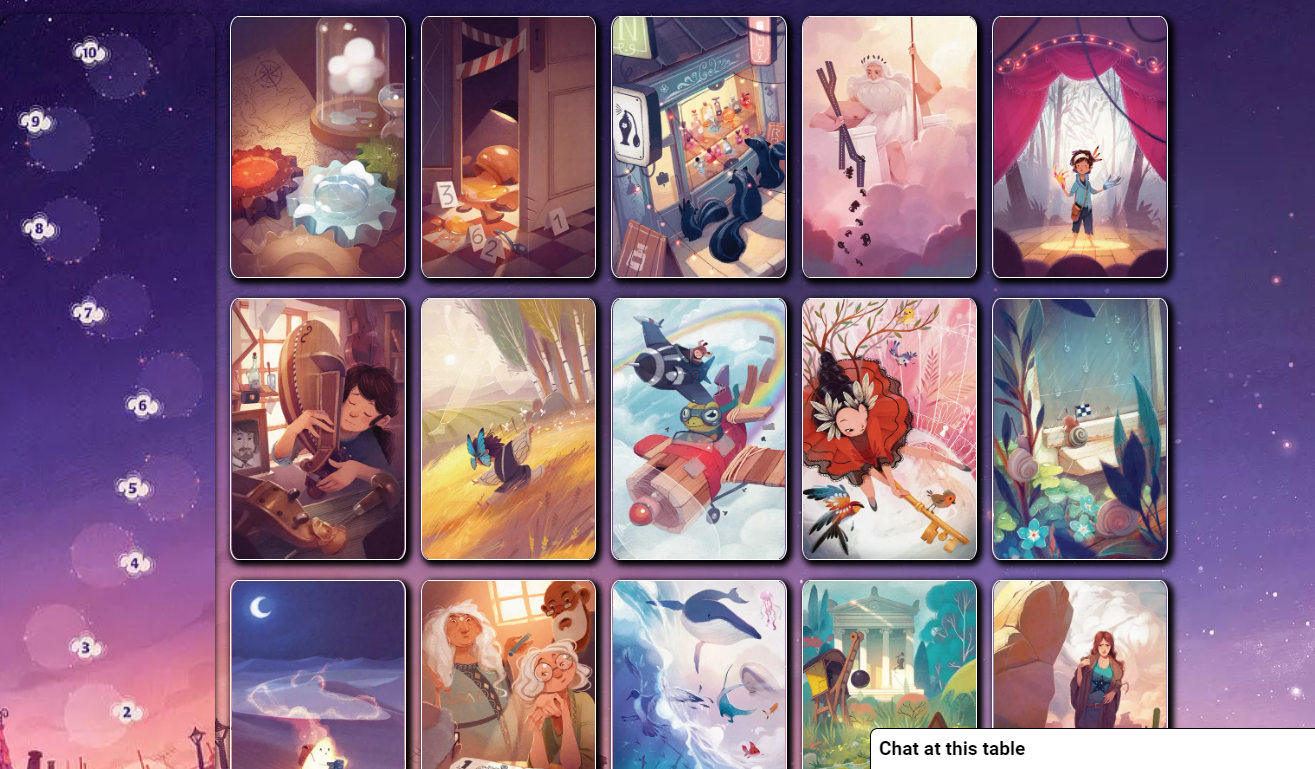

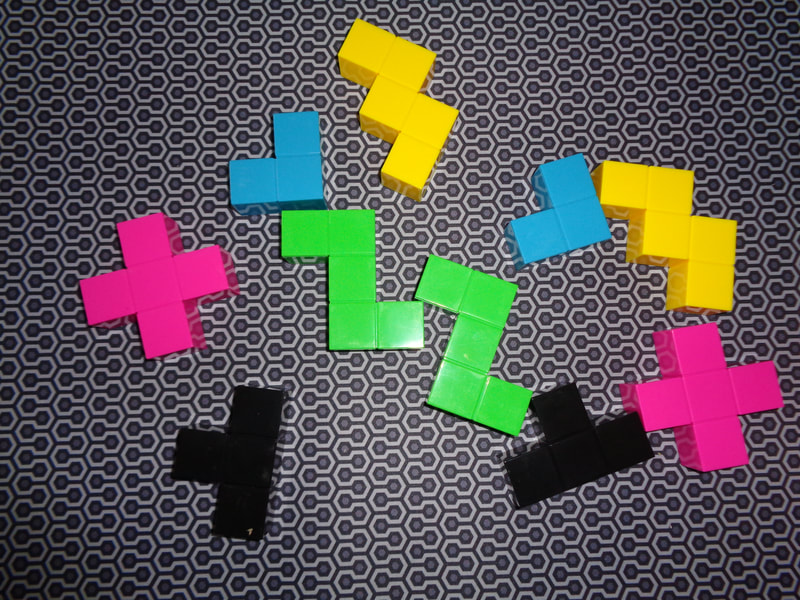
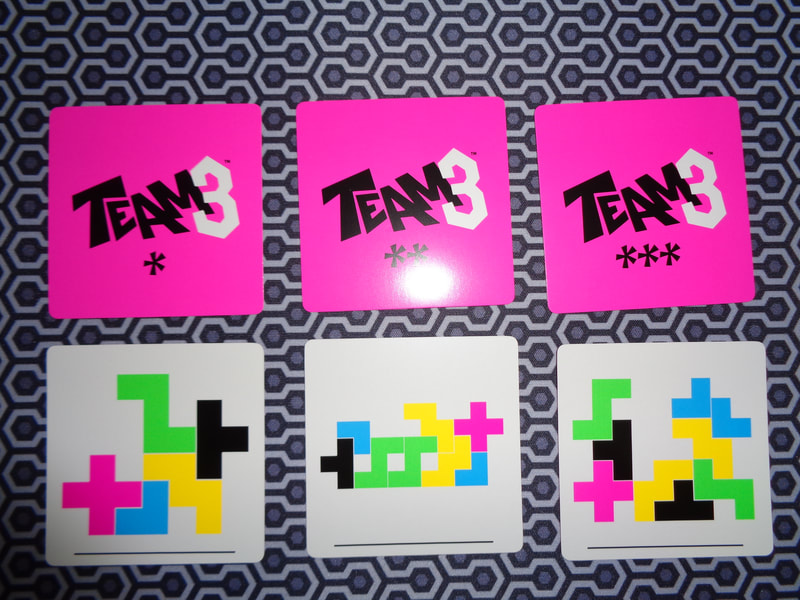
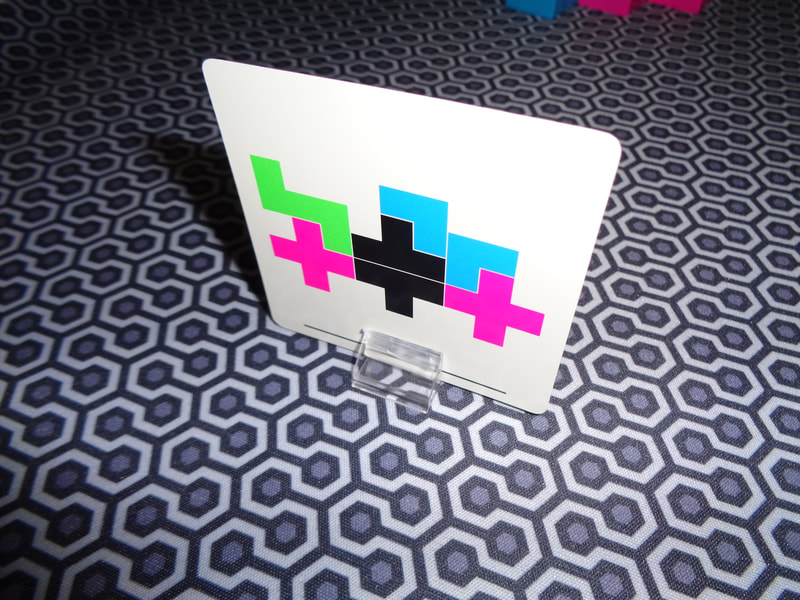
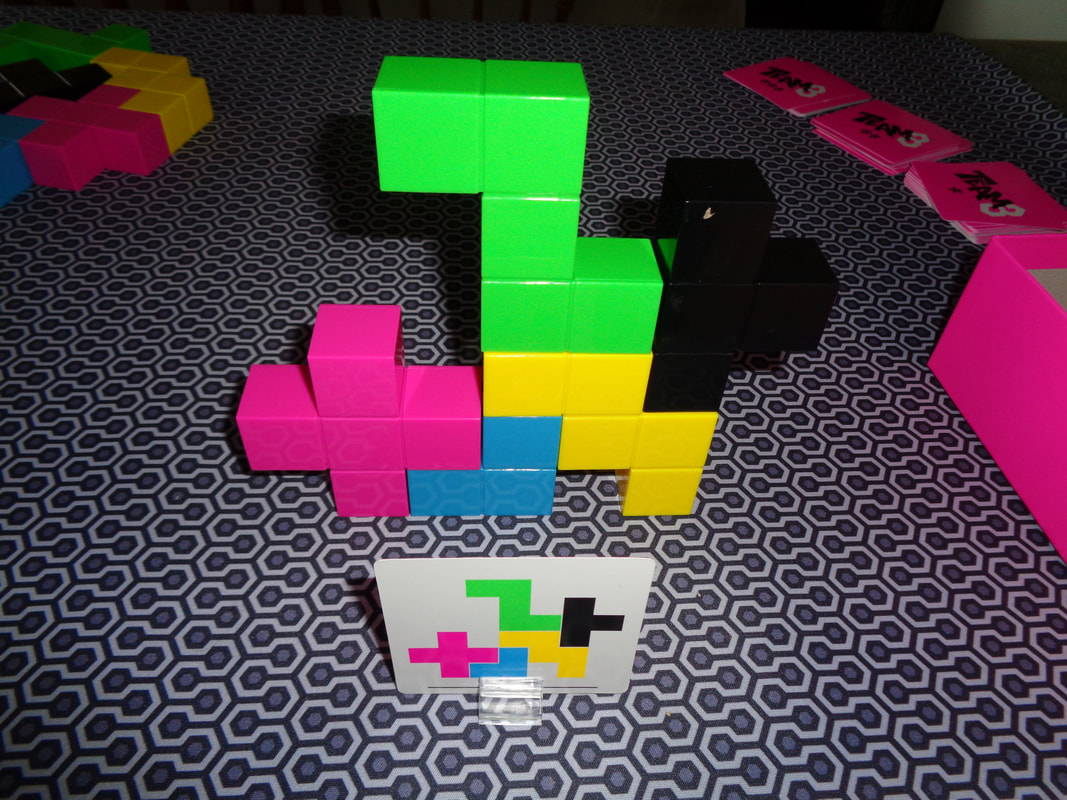
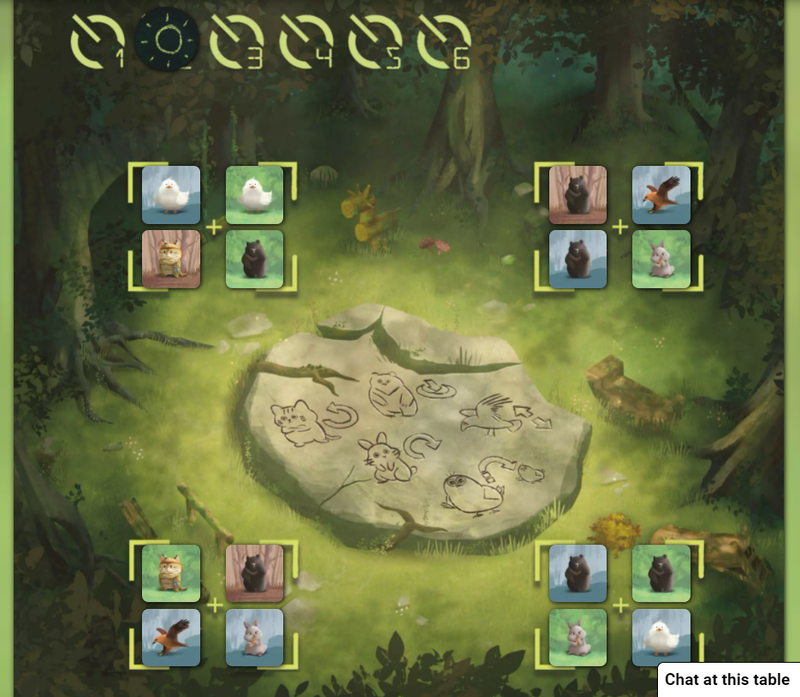
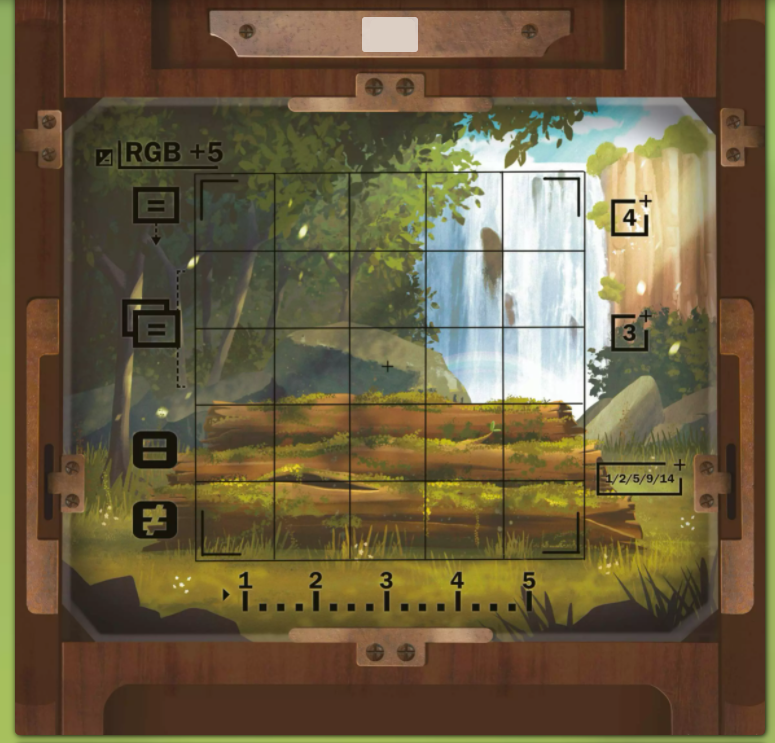
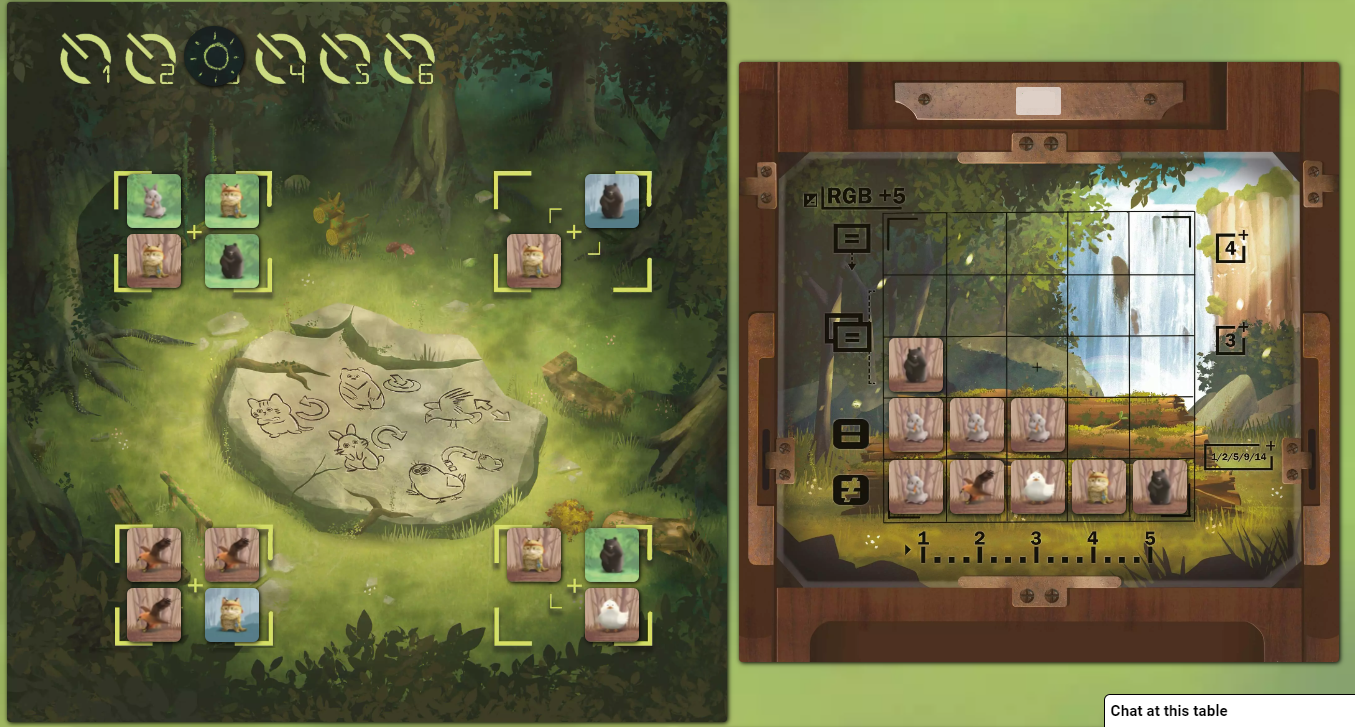
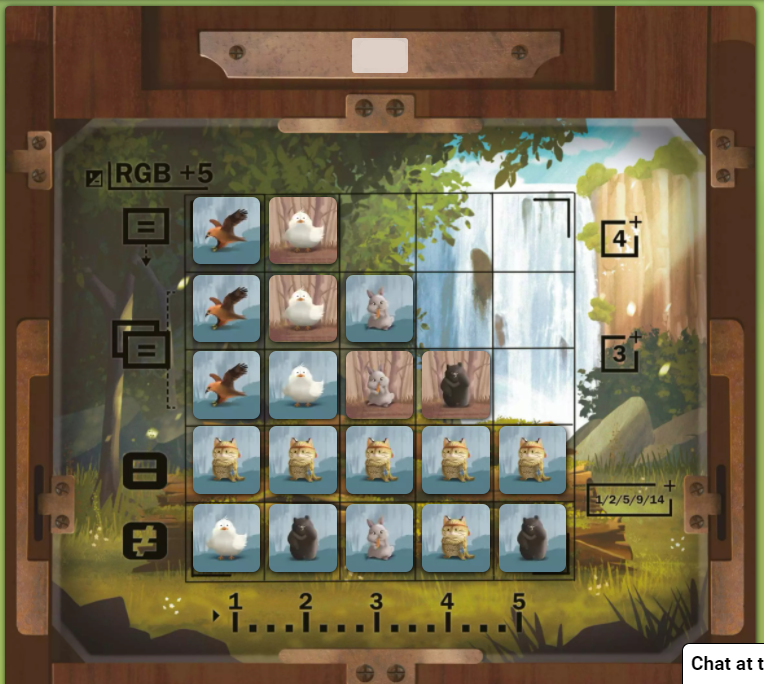
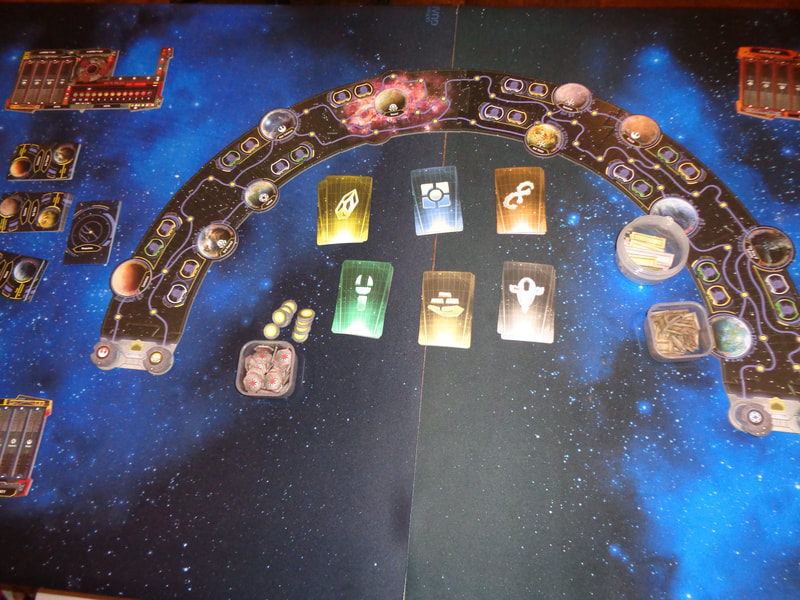
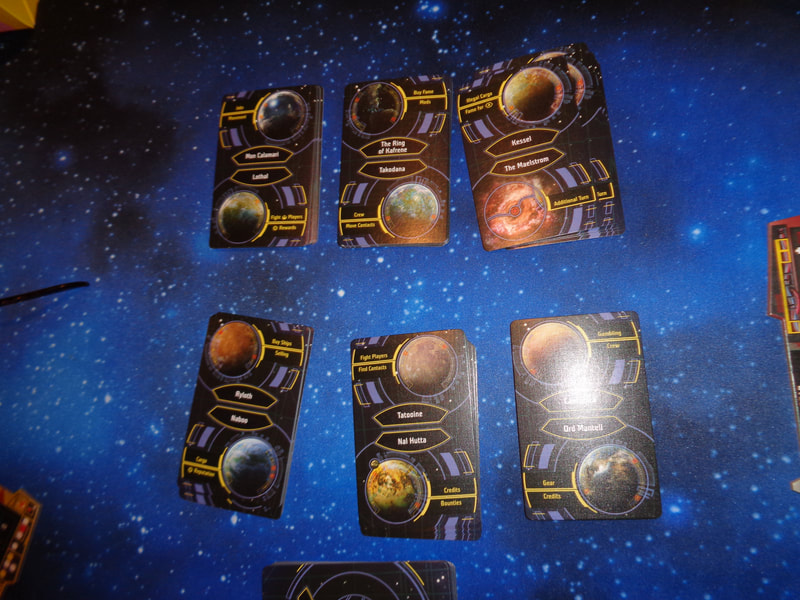
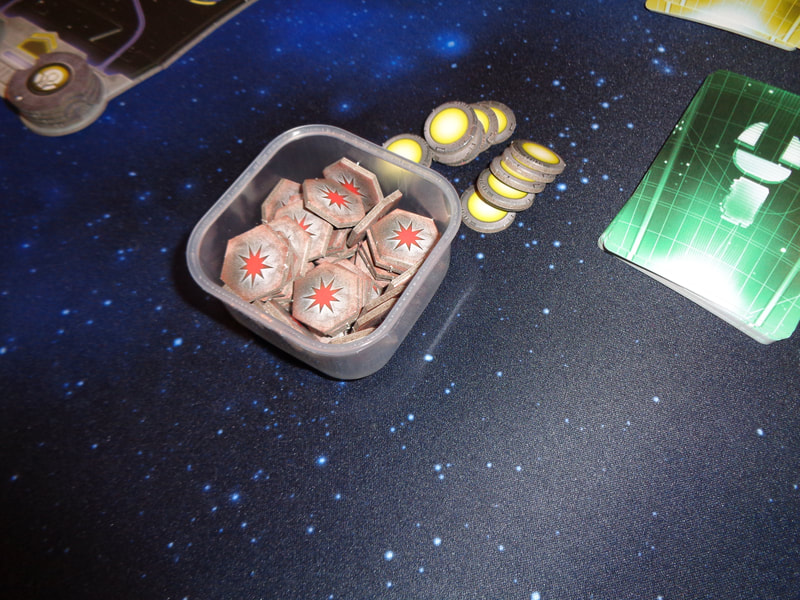
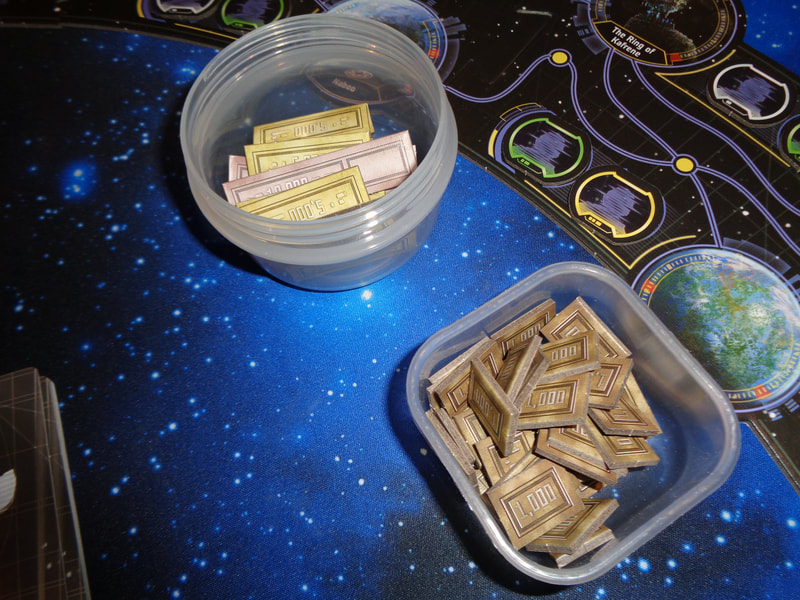
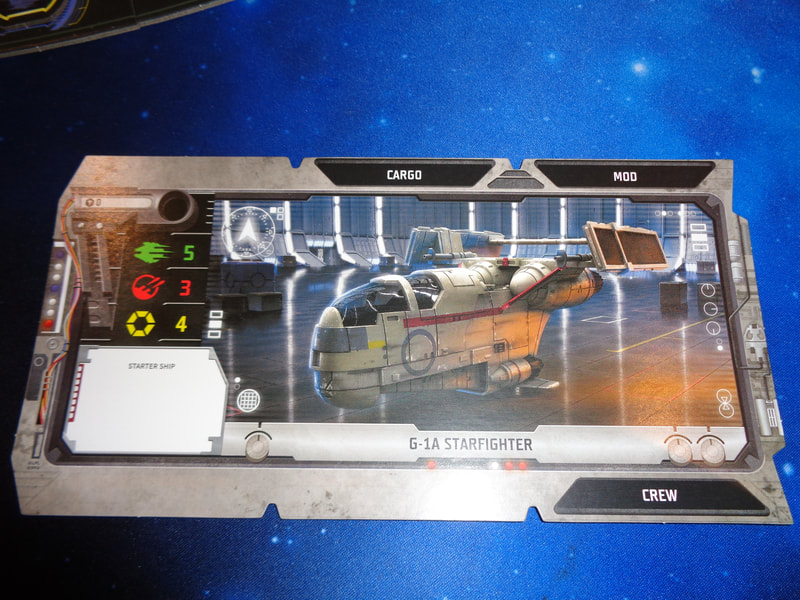
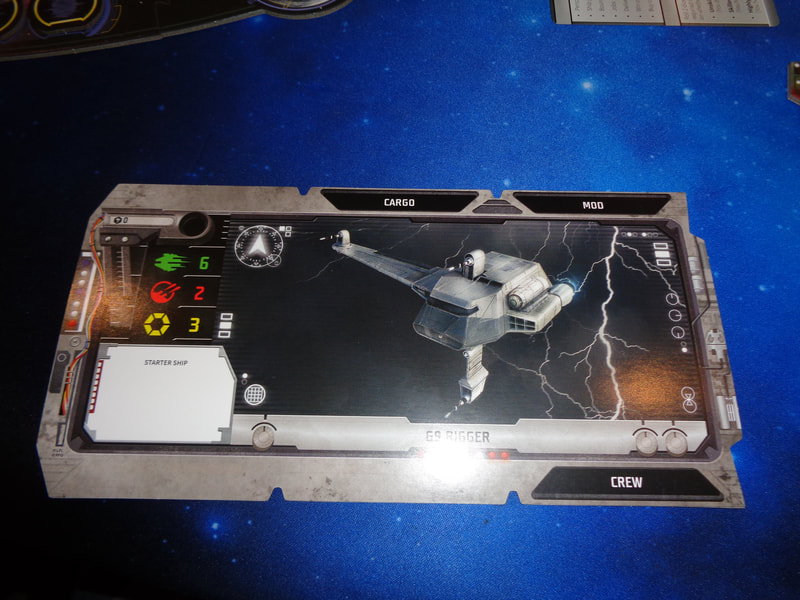
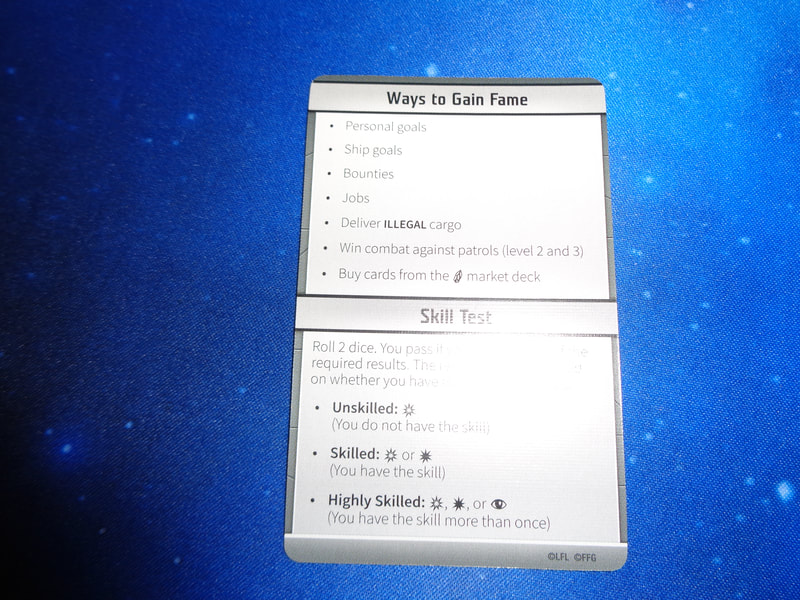
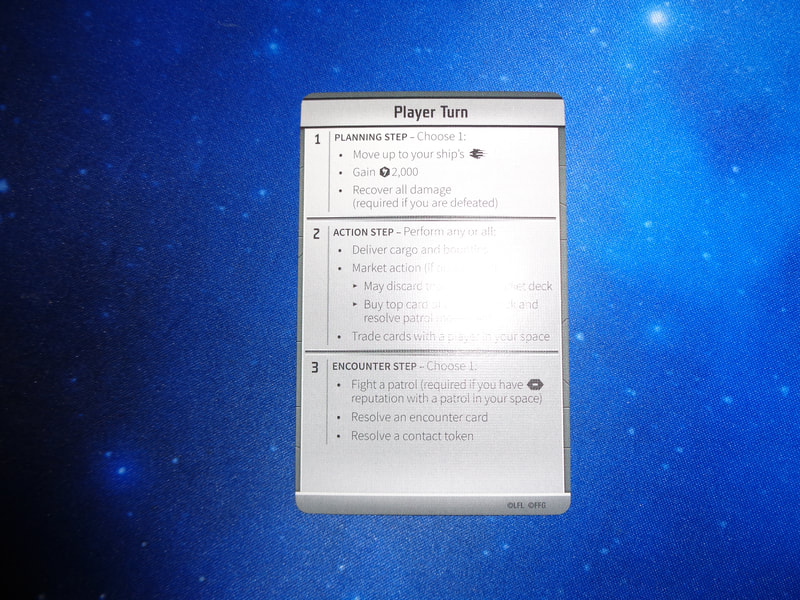
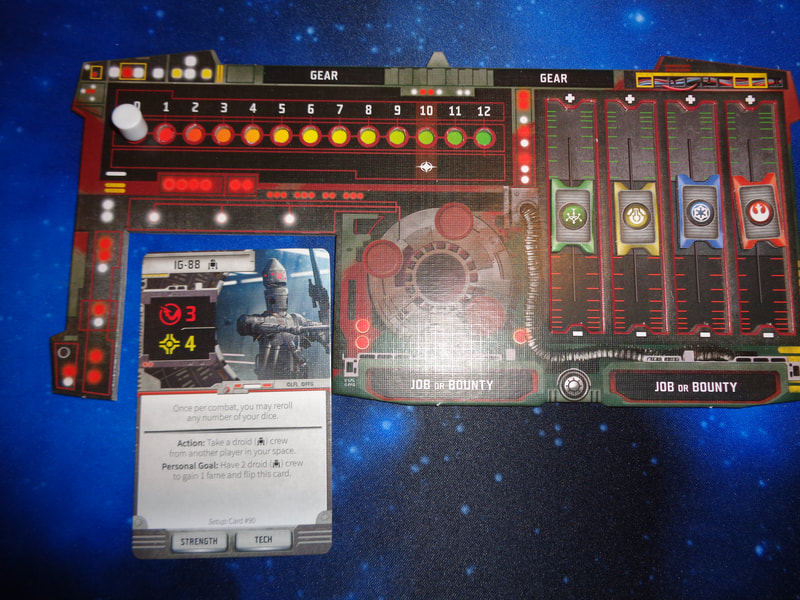
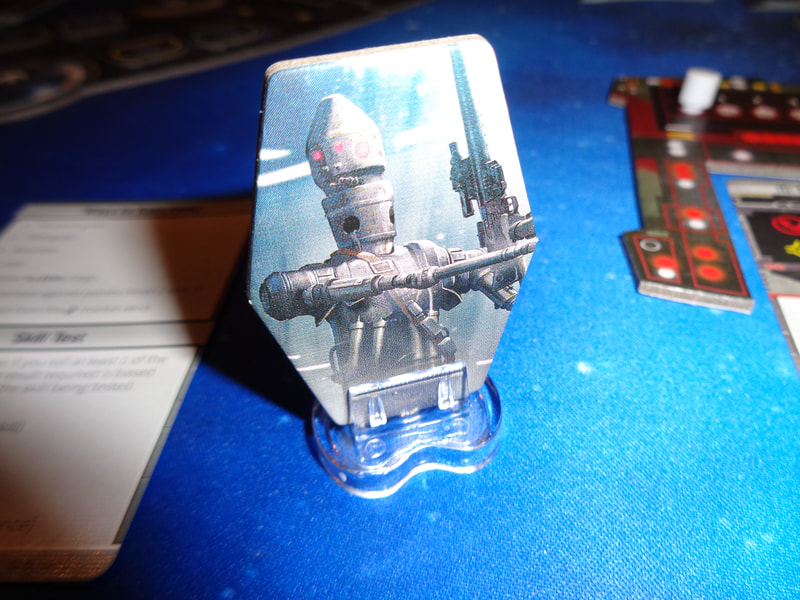
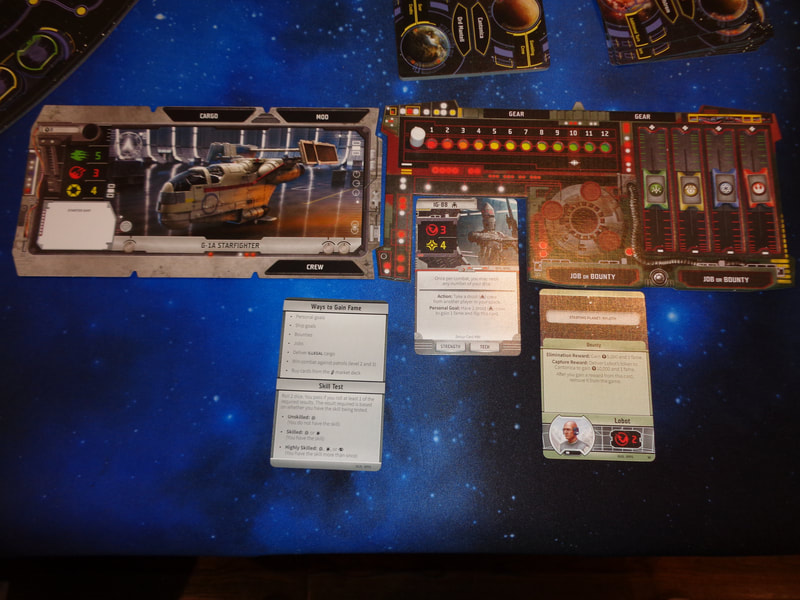
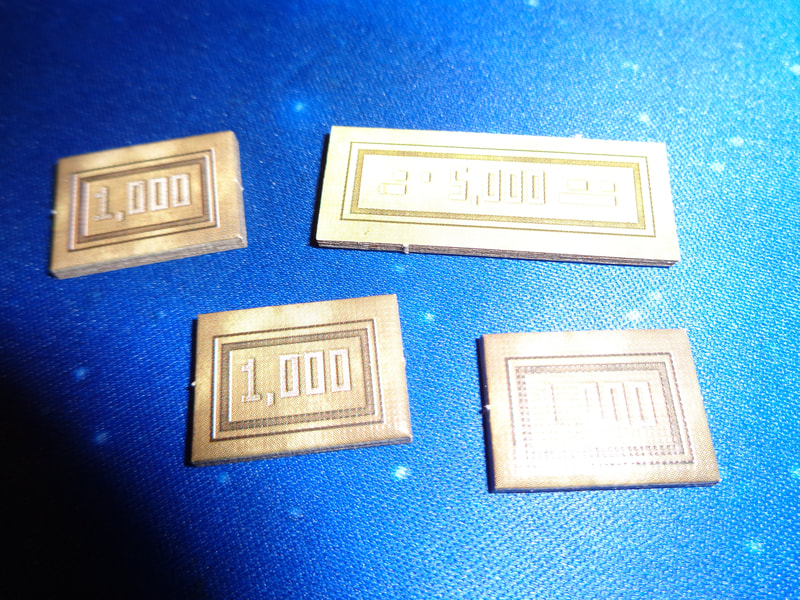
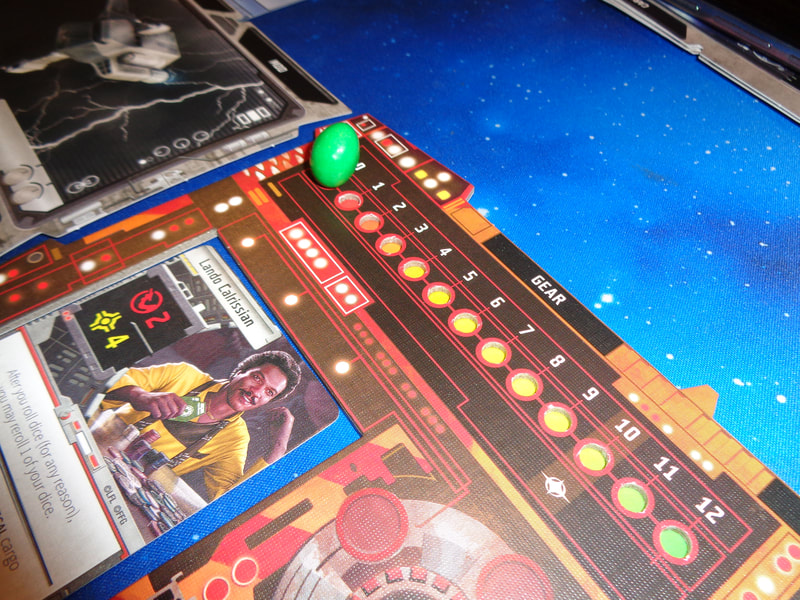
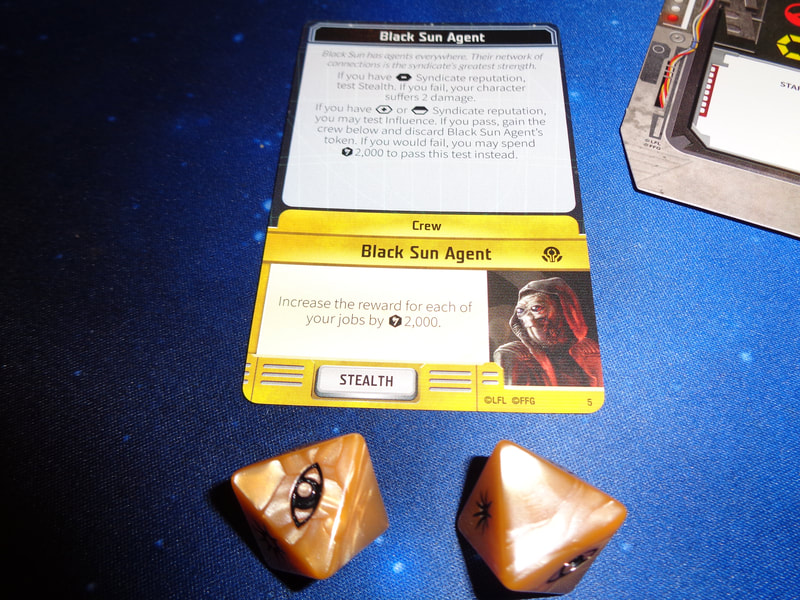
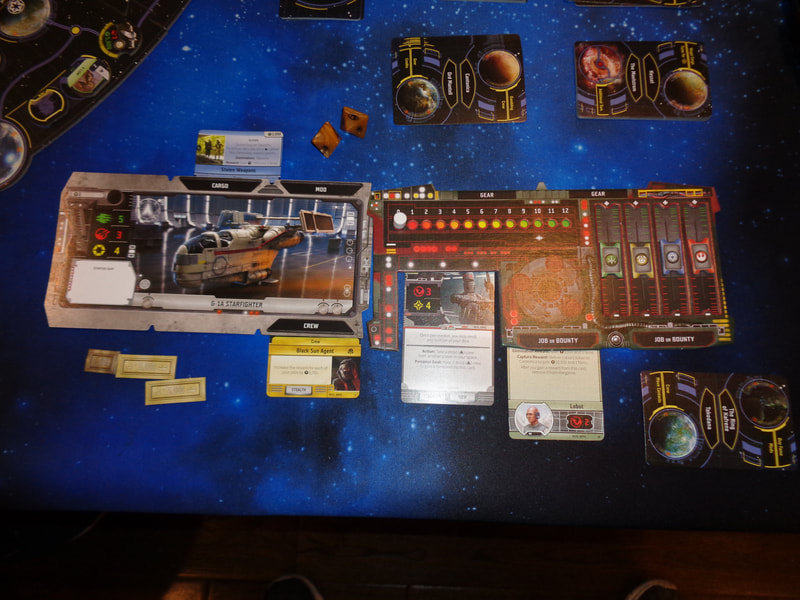
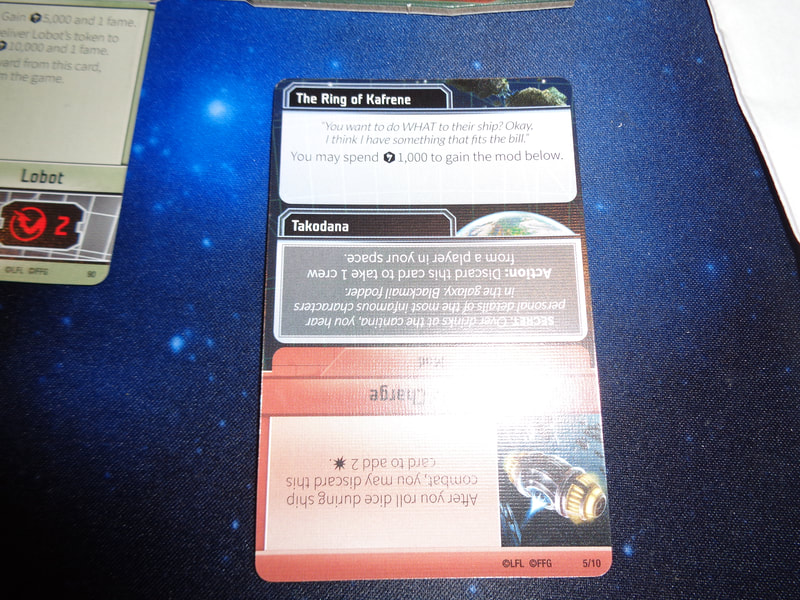
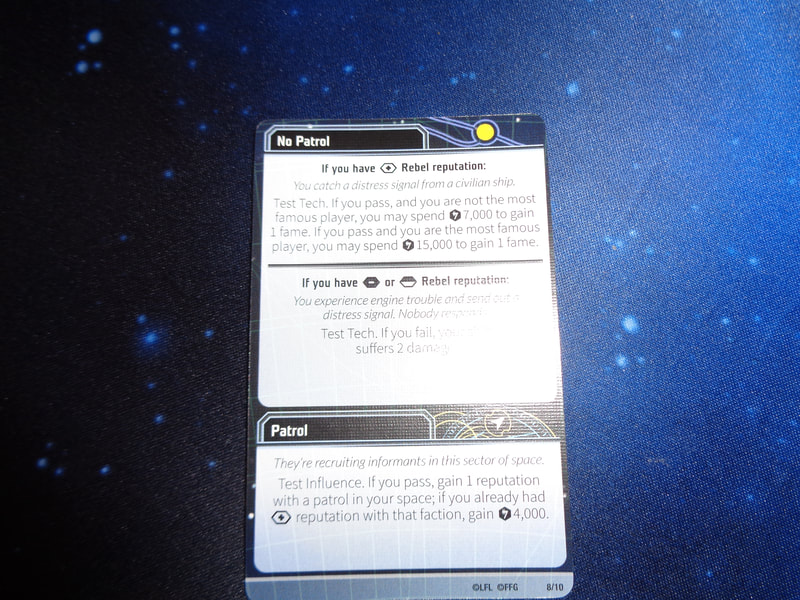
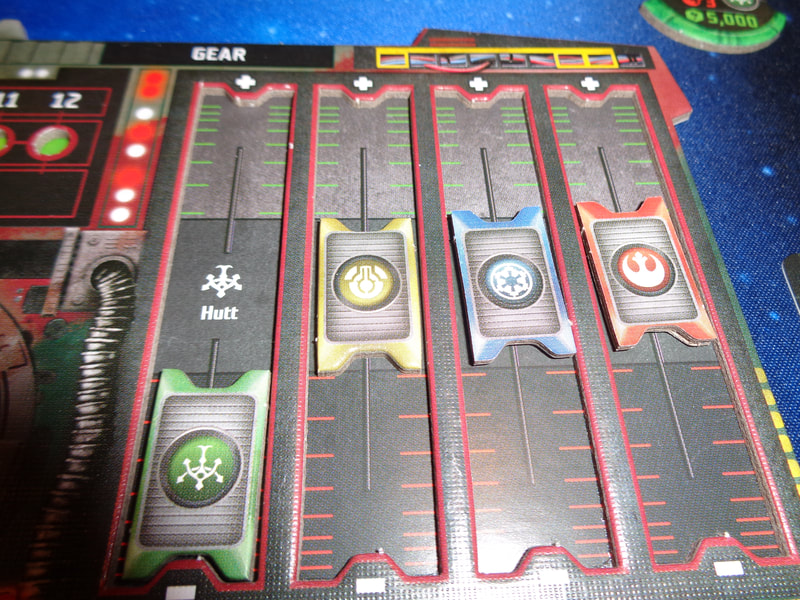
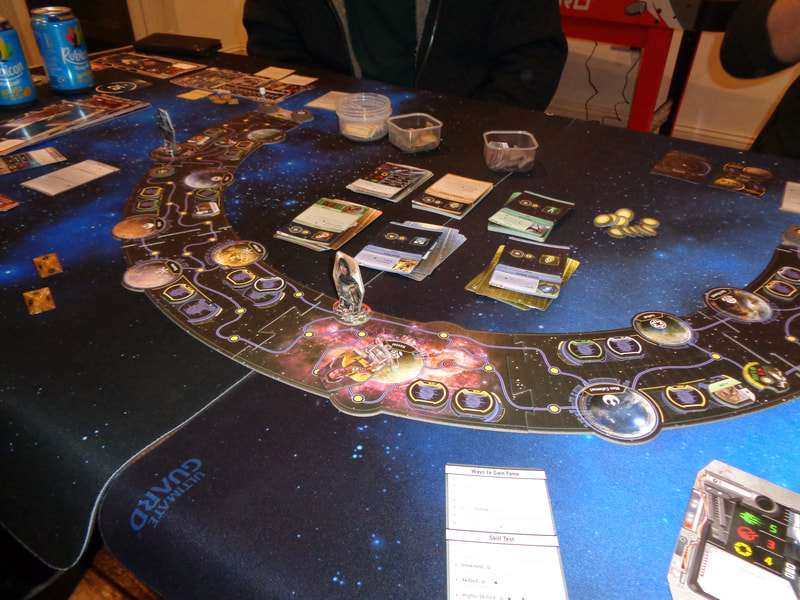
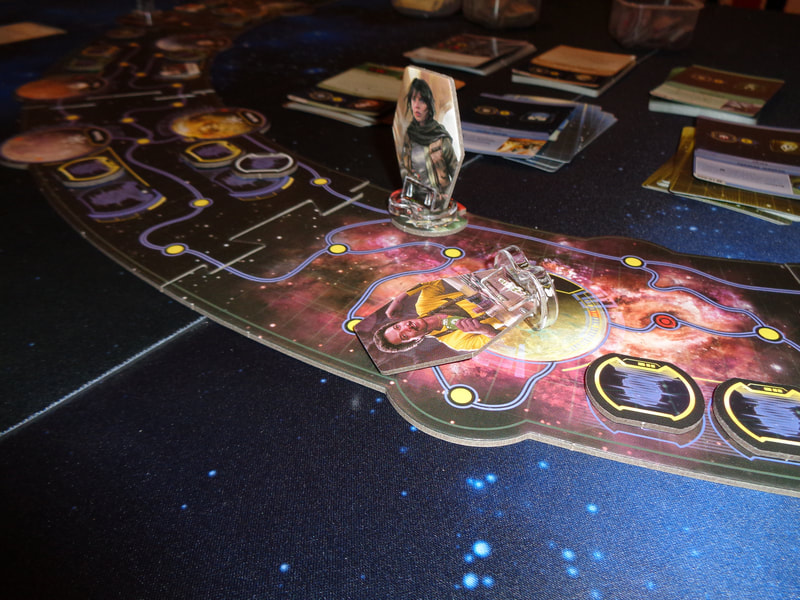
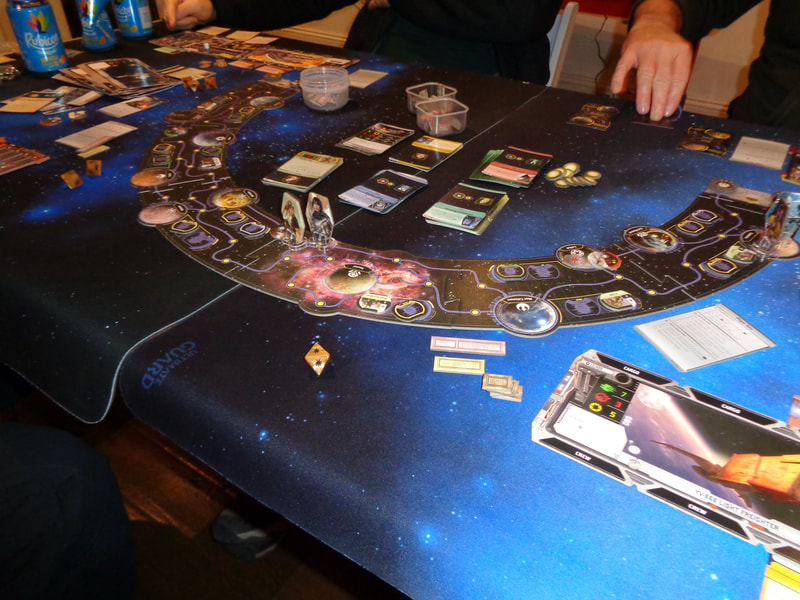
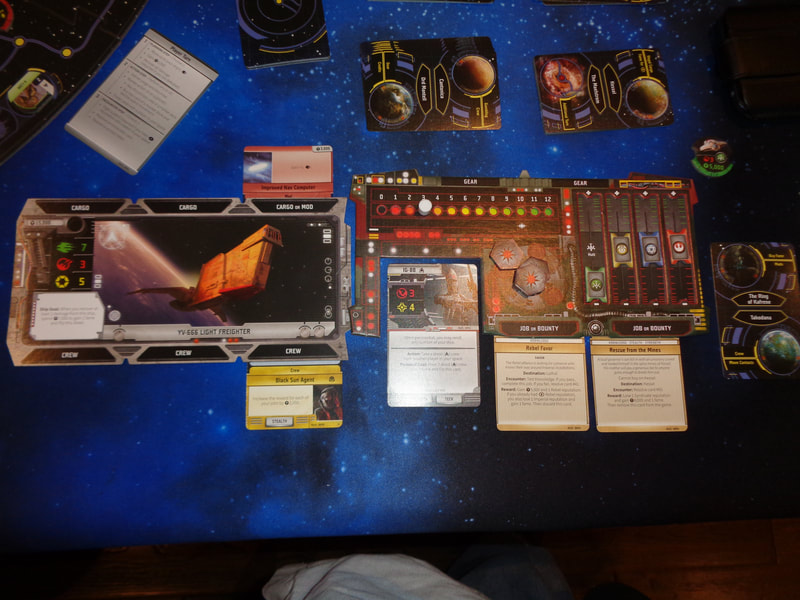
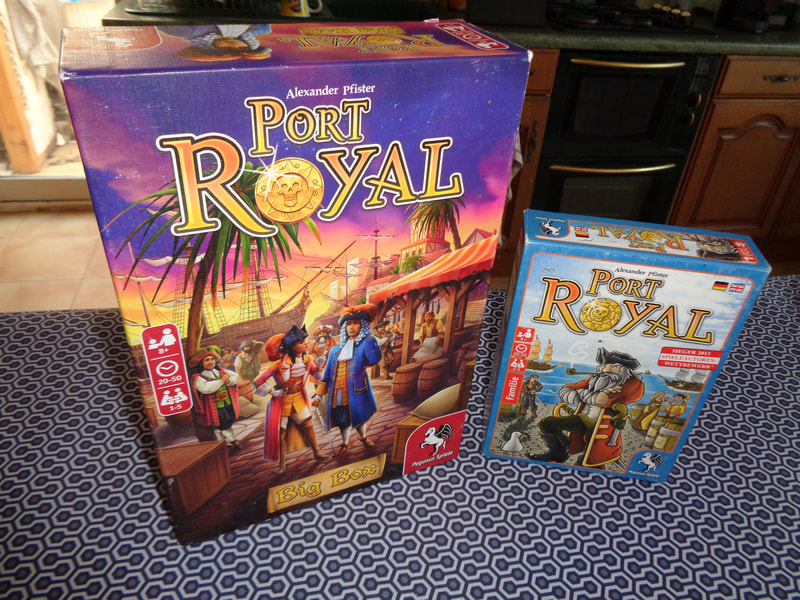
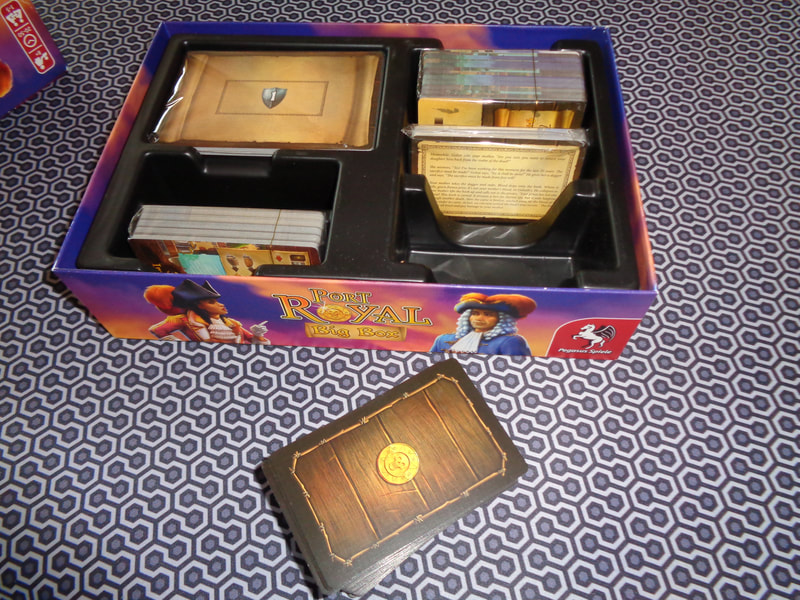
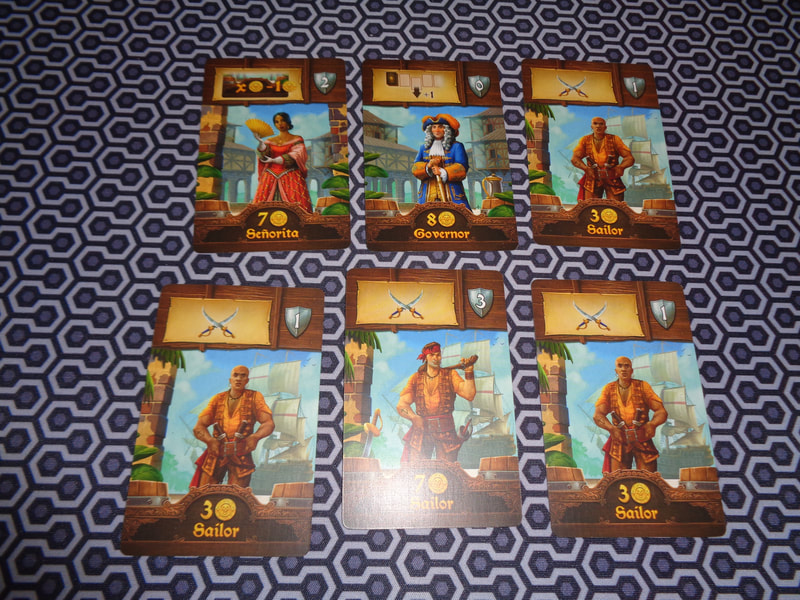
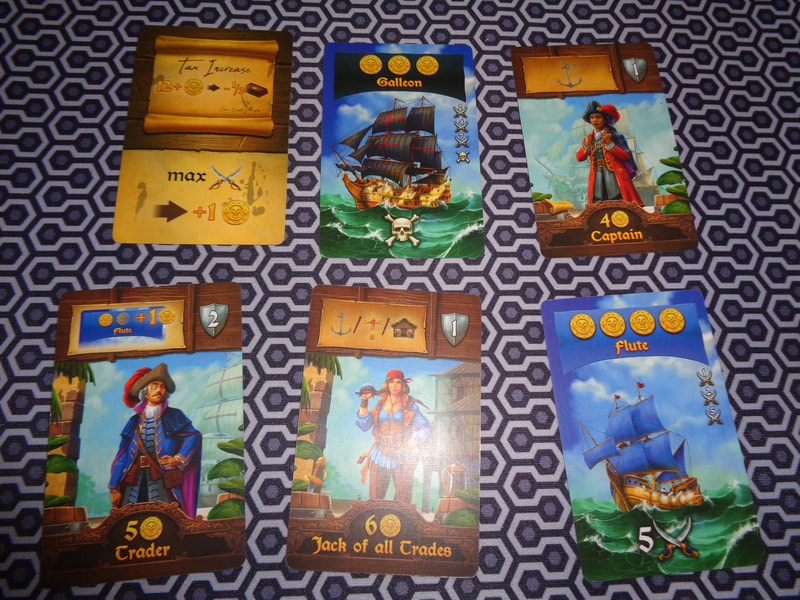
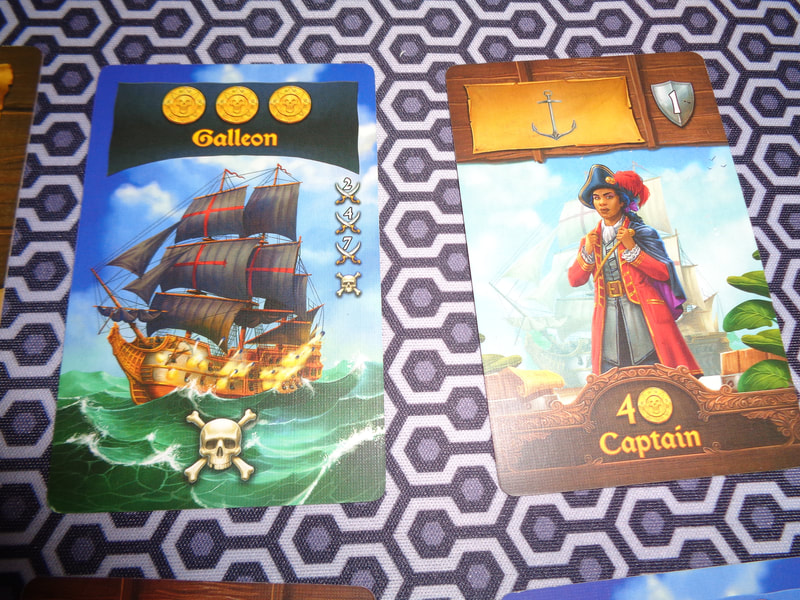
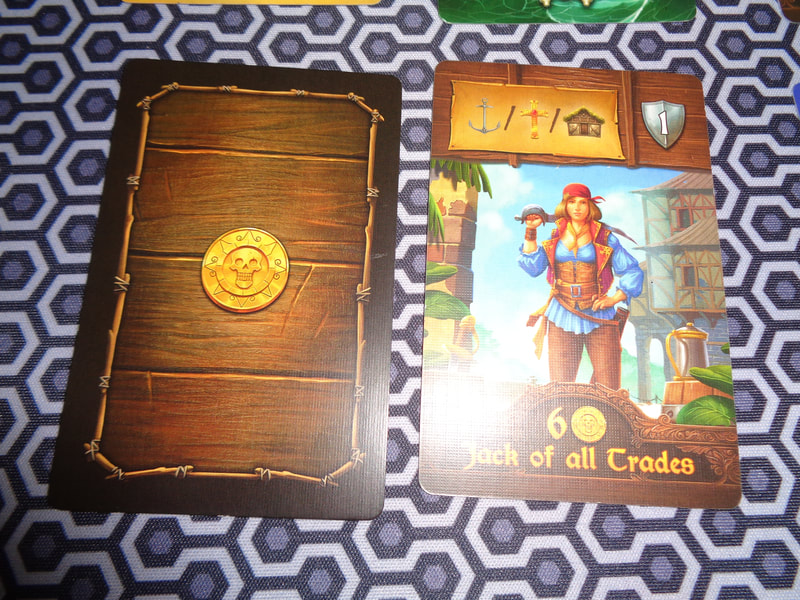
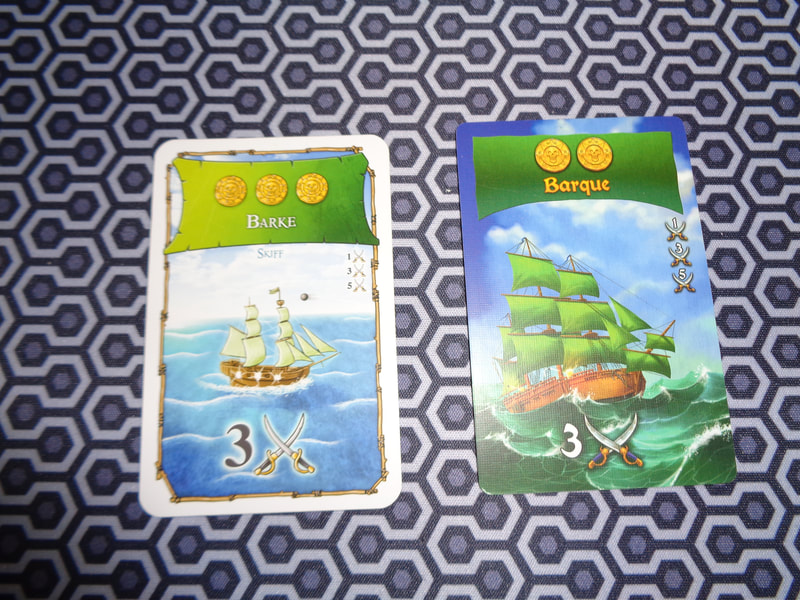
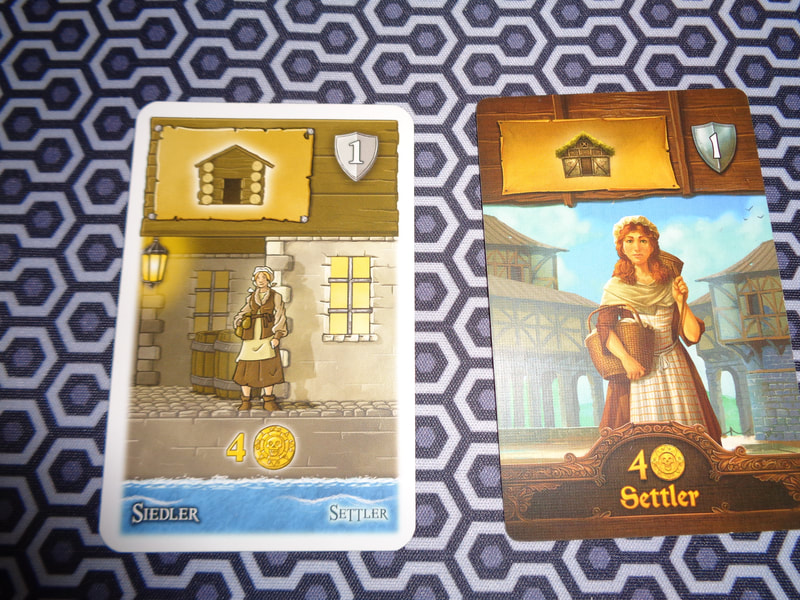
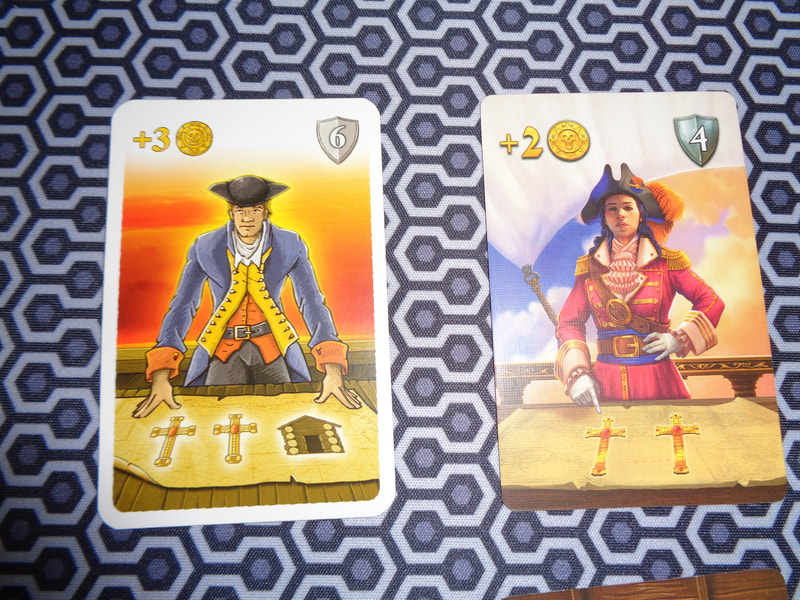
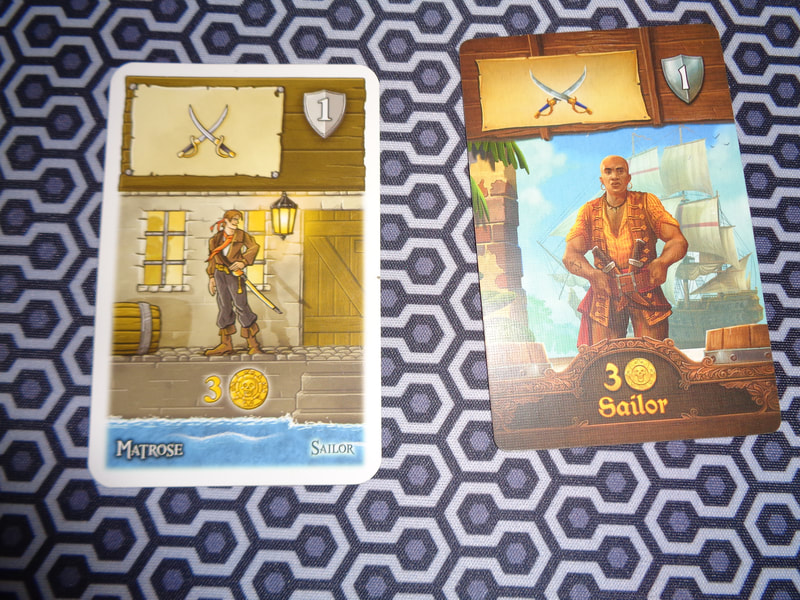
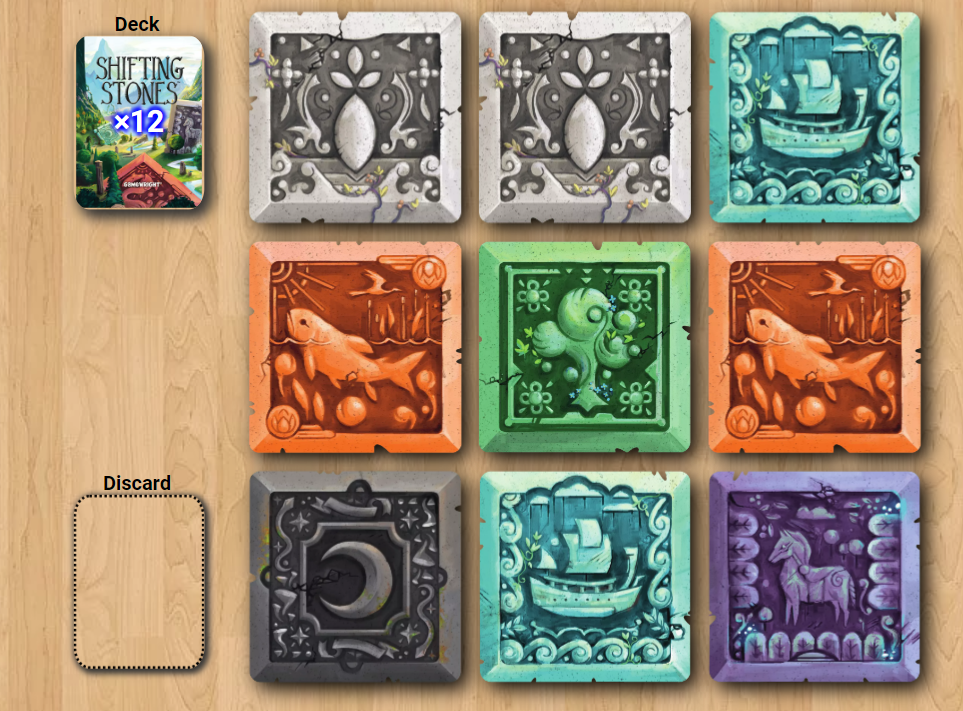
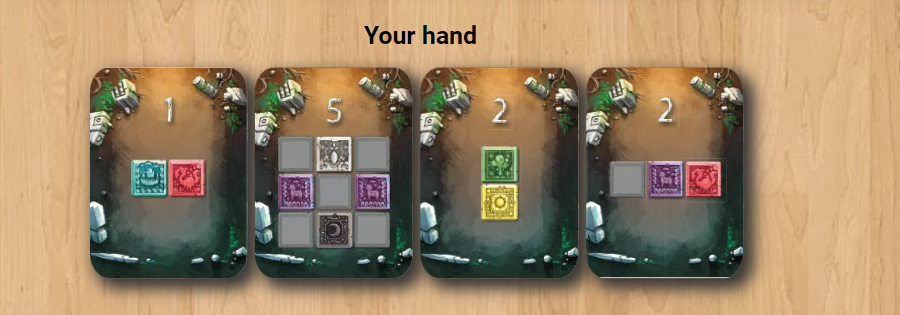
 RSS Feed
RSS Feed
